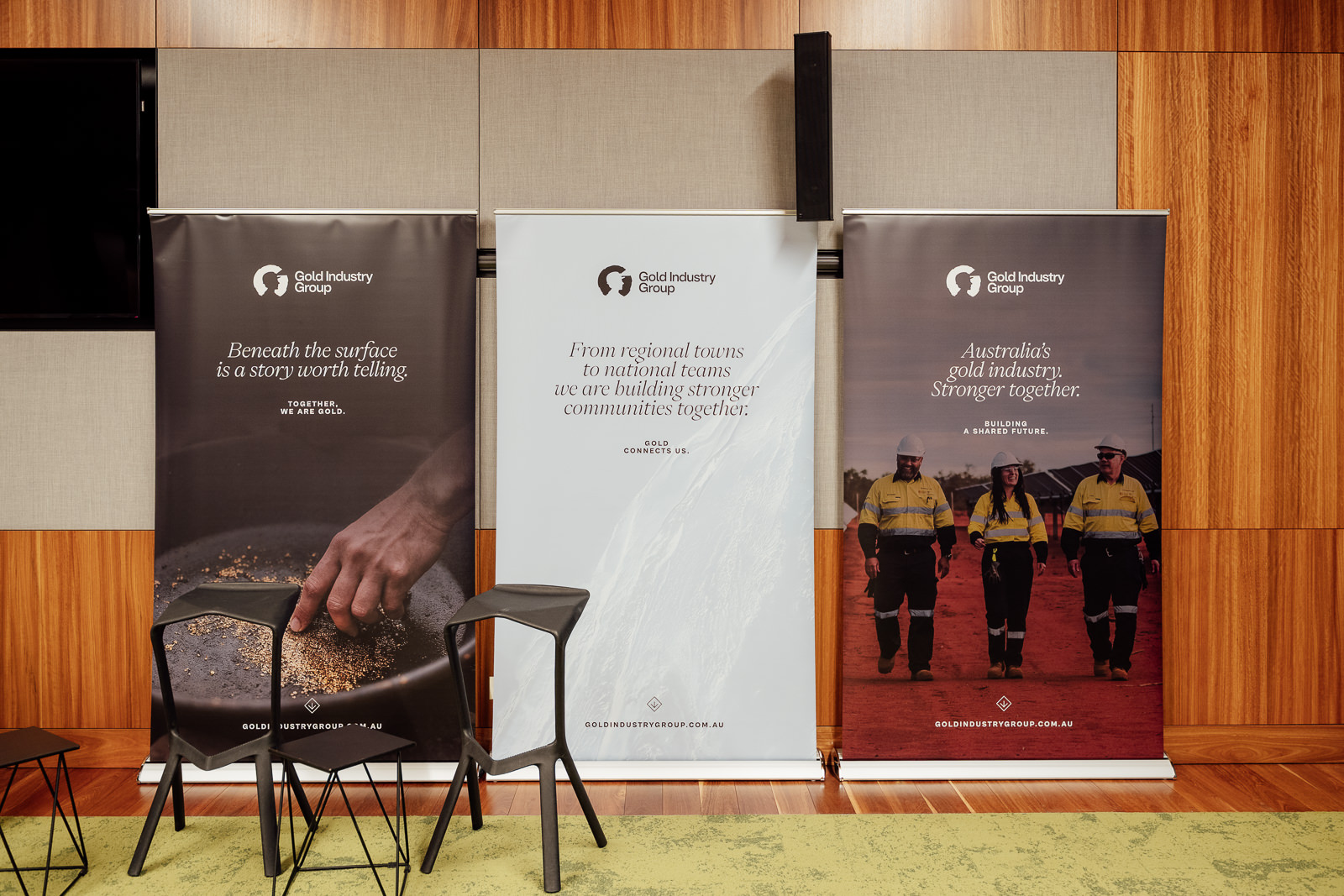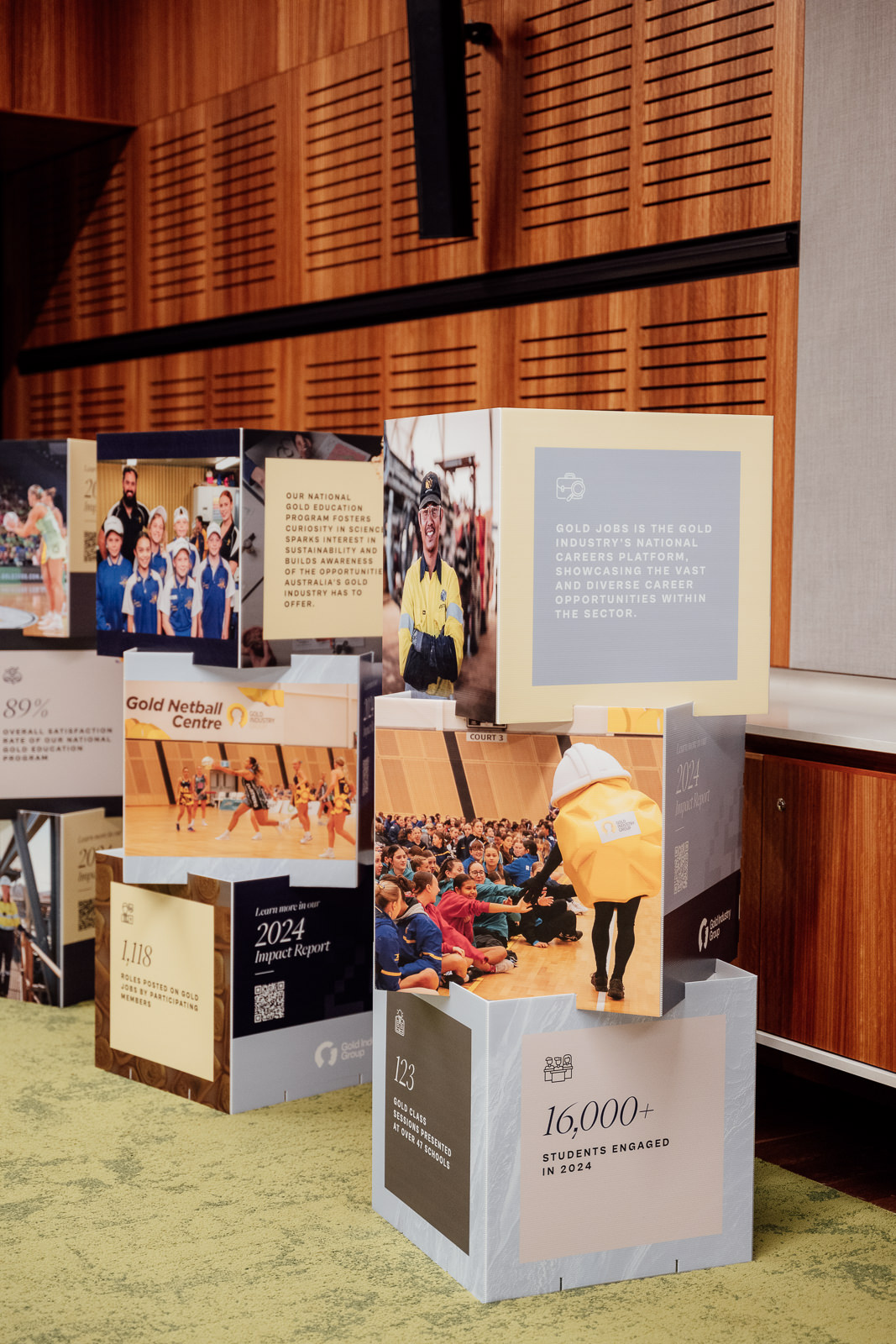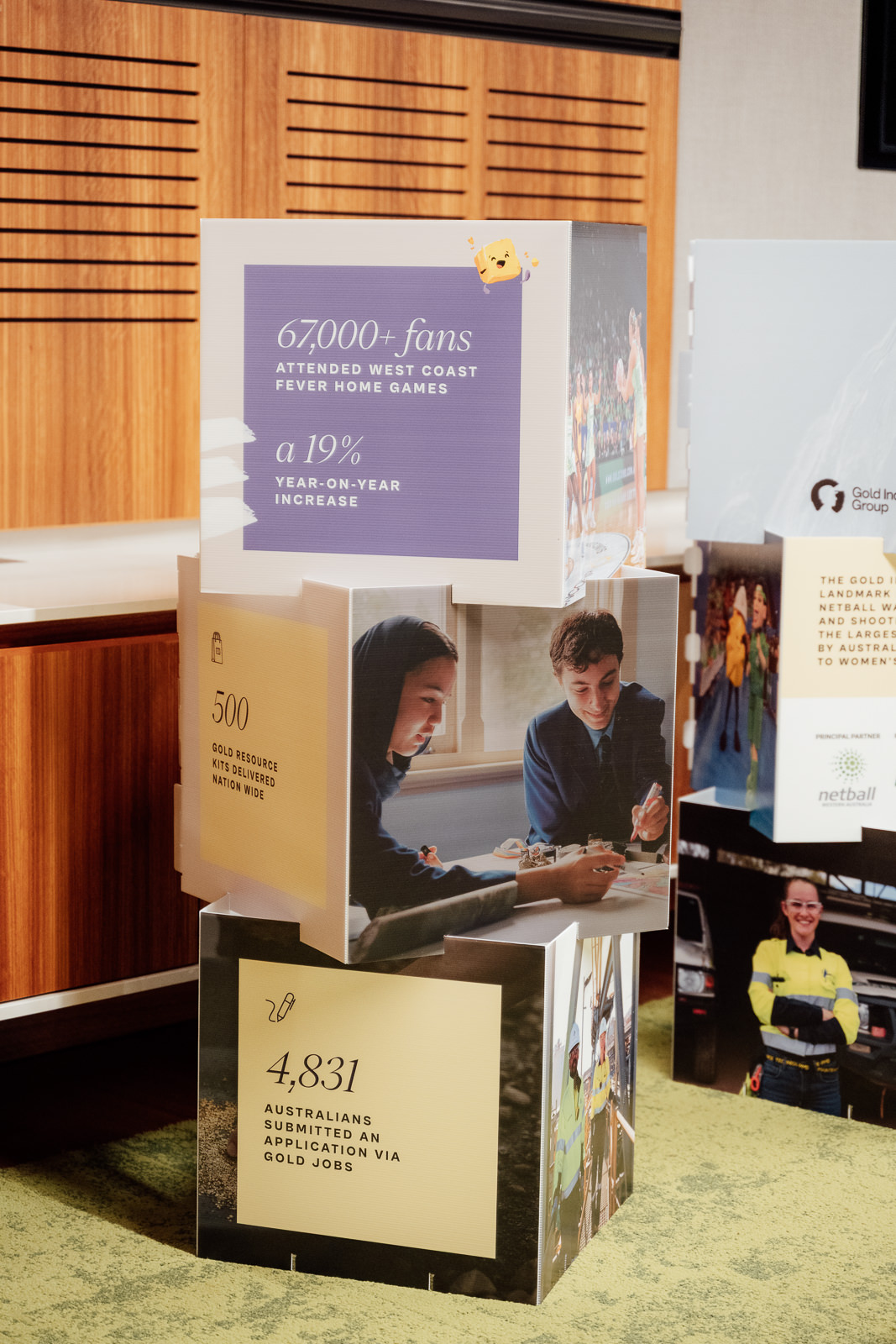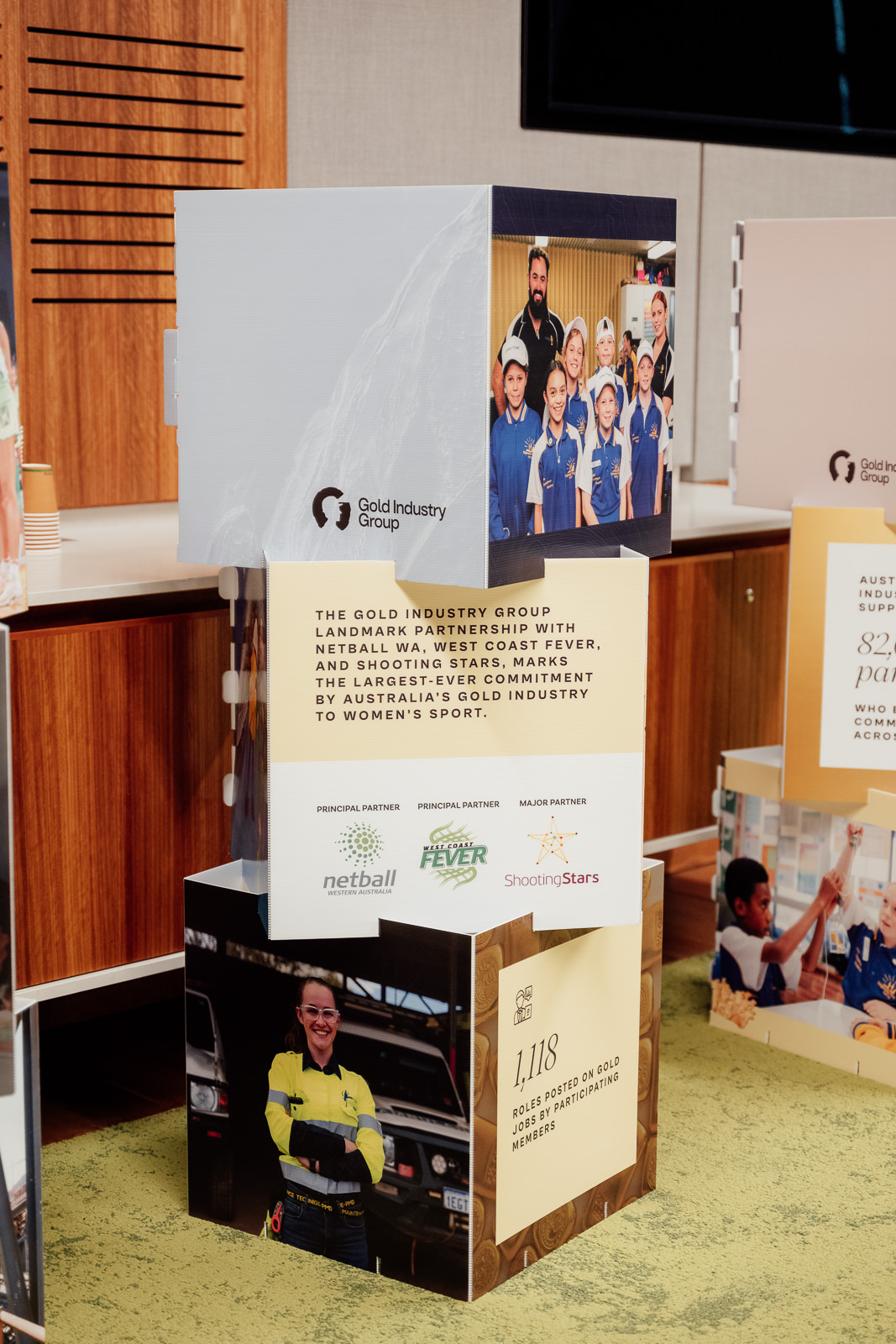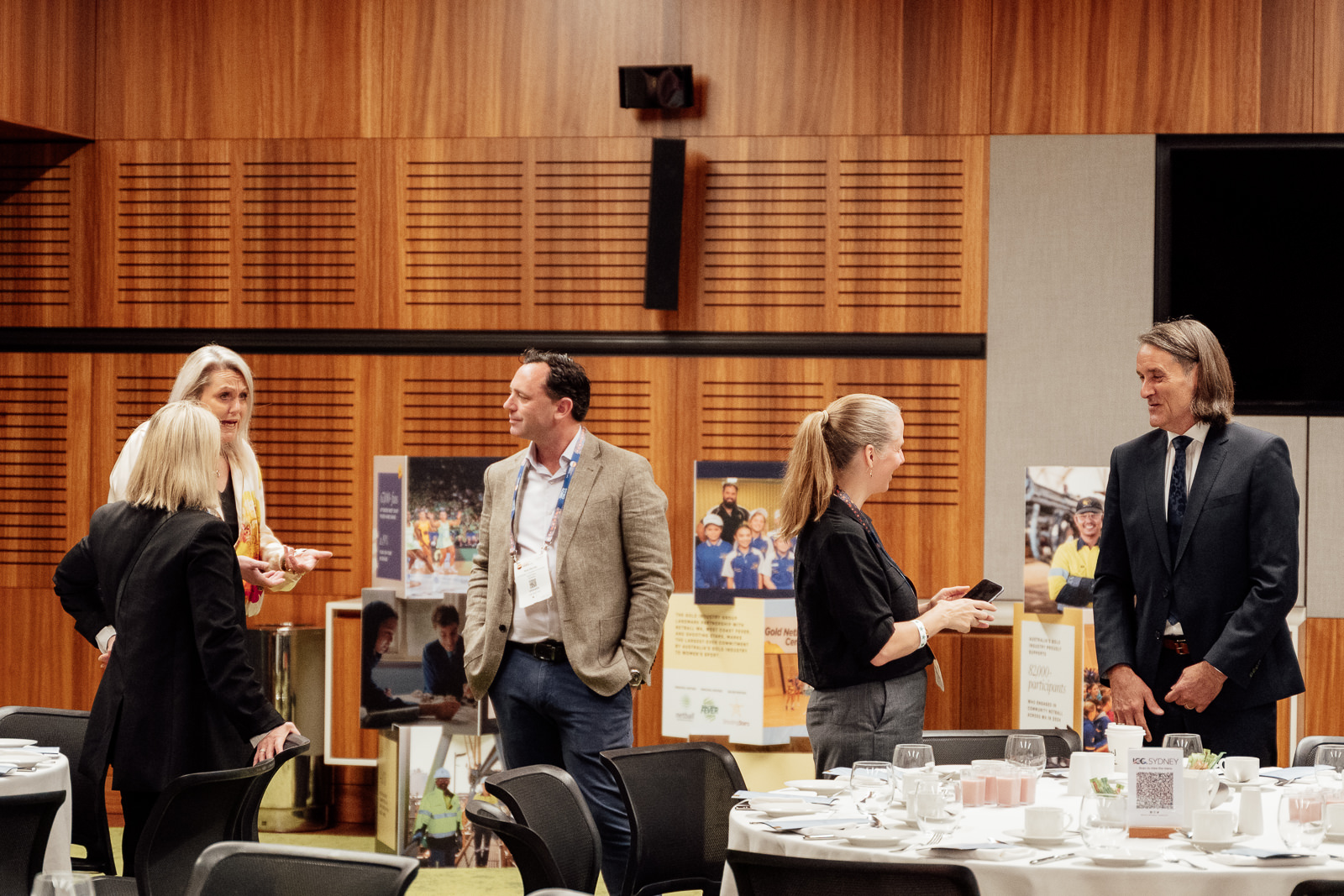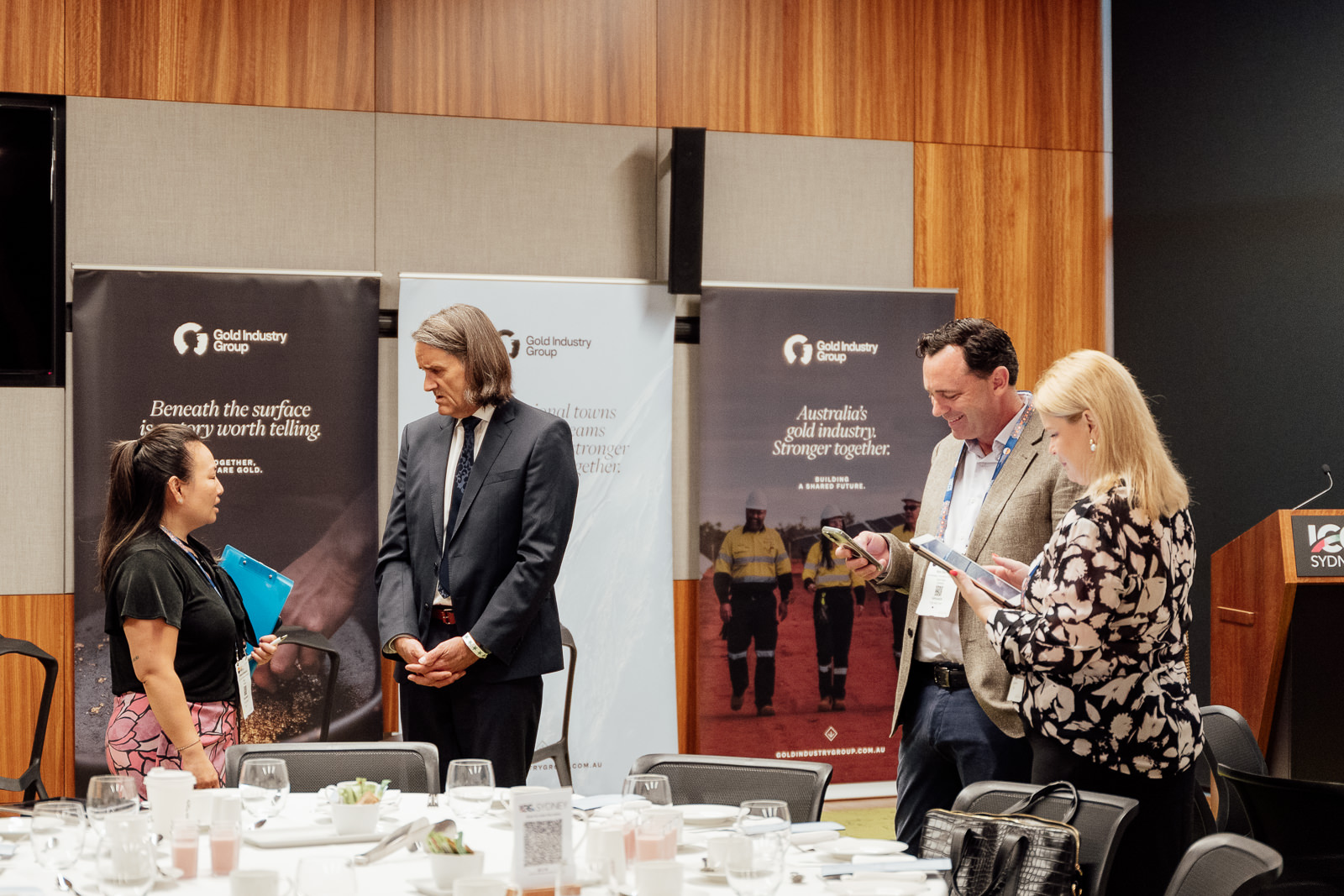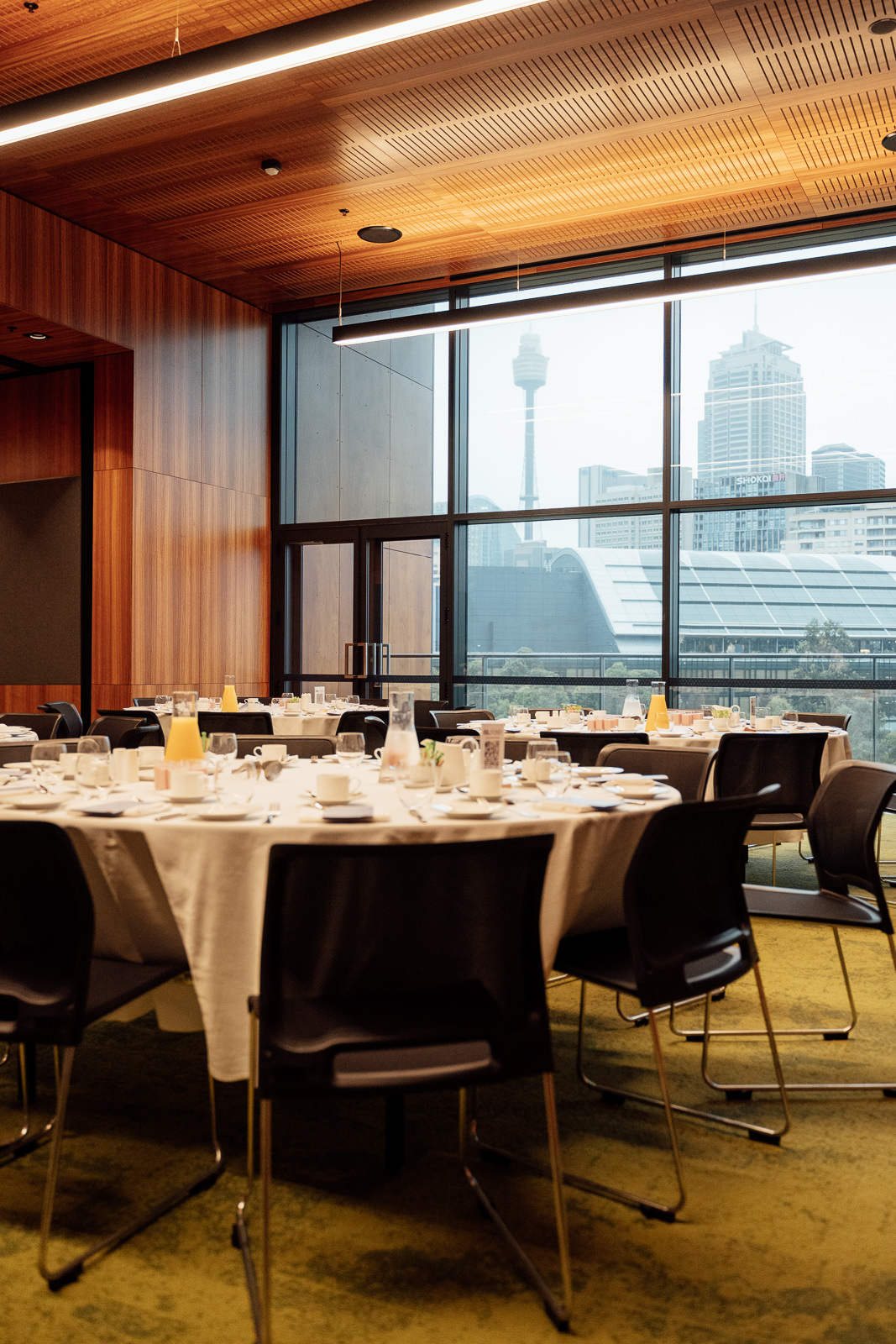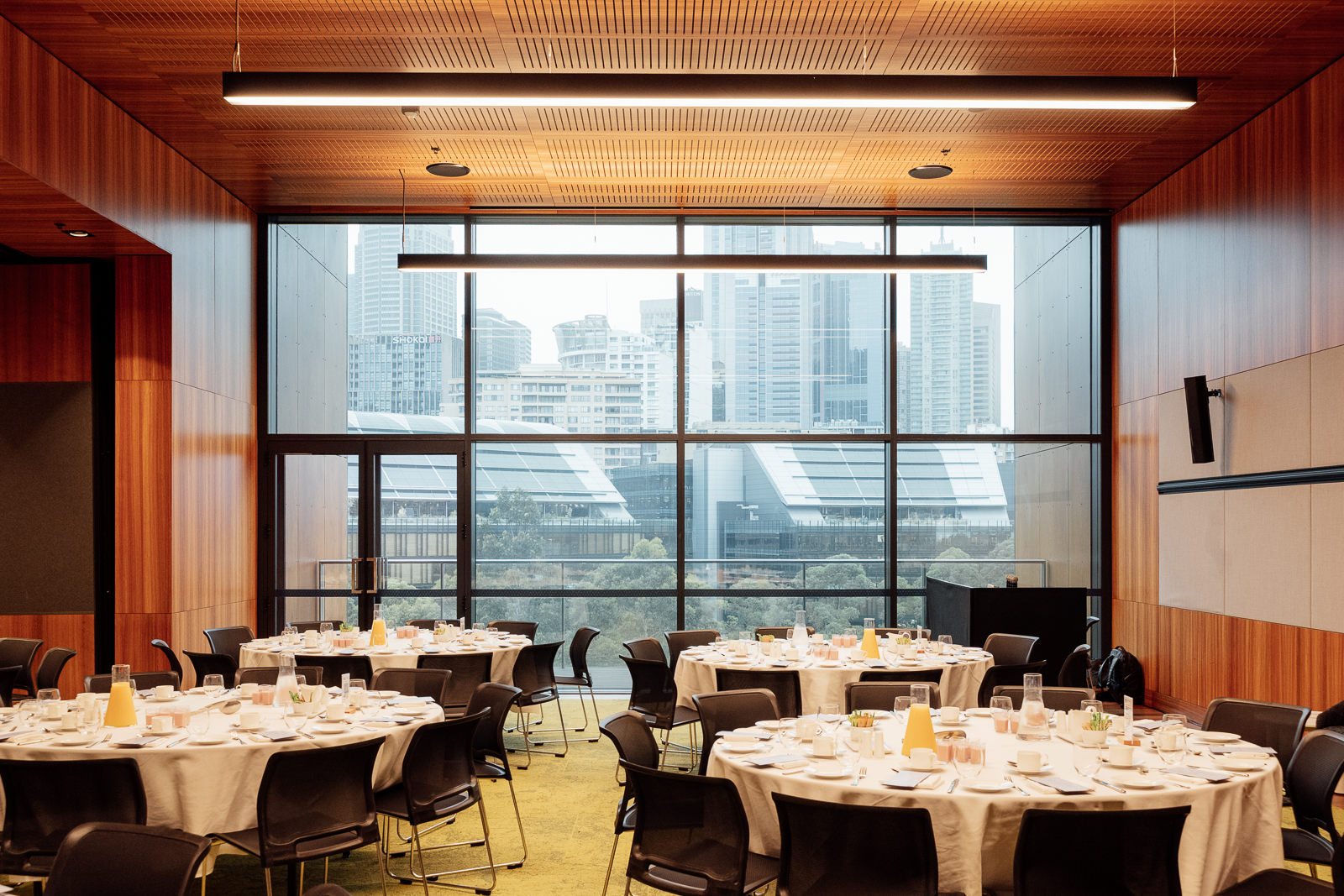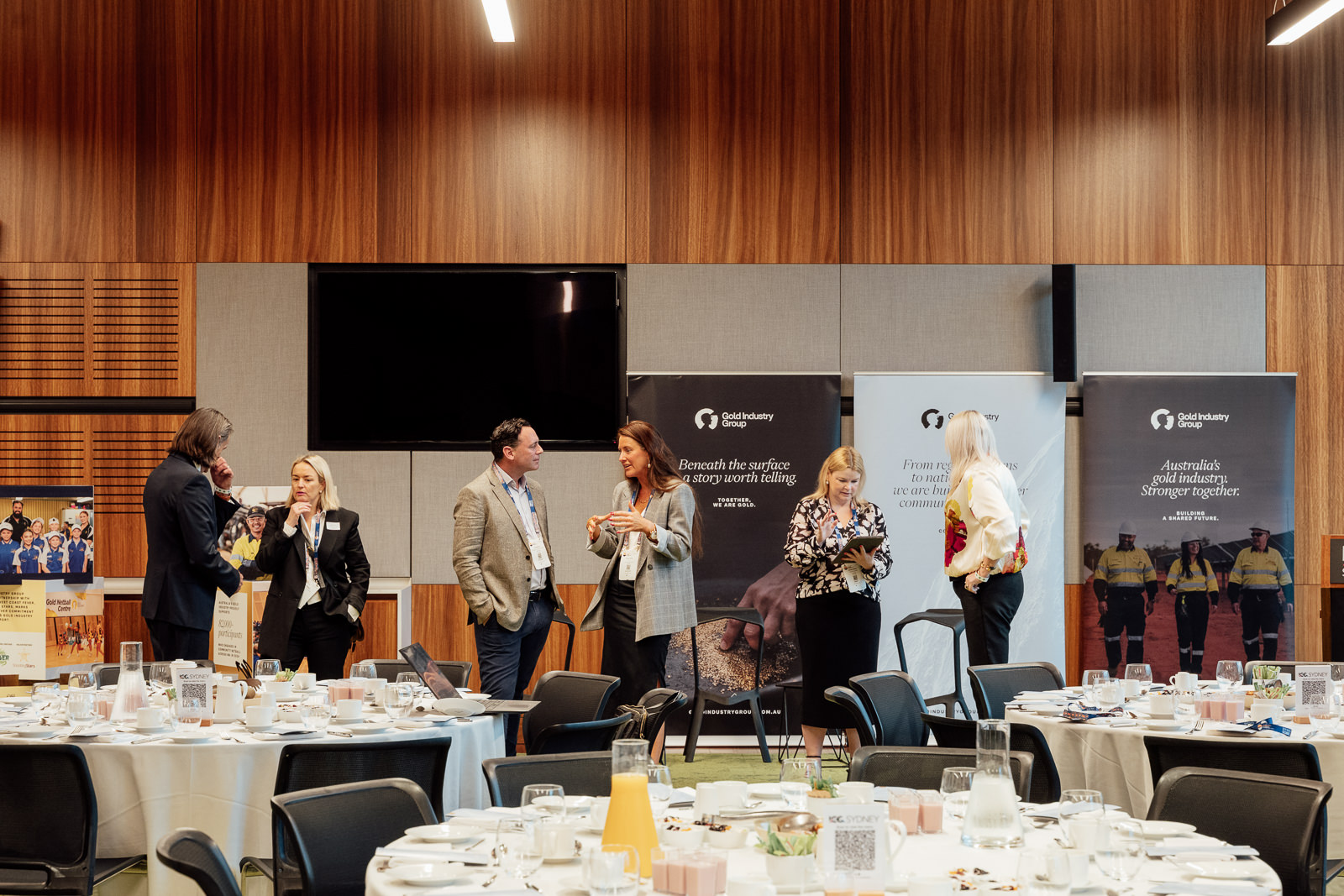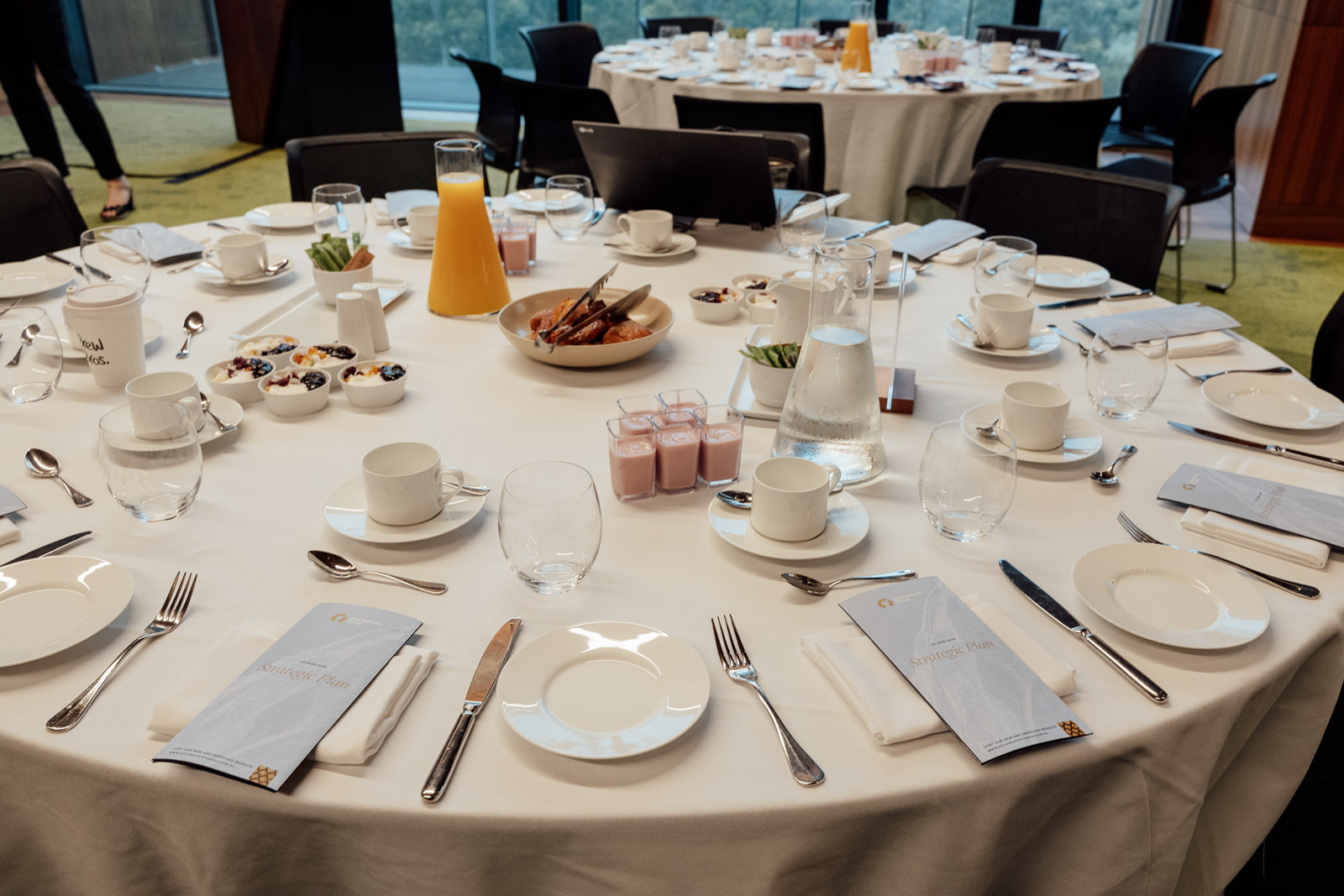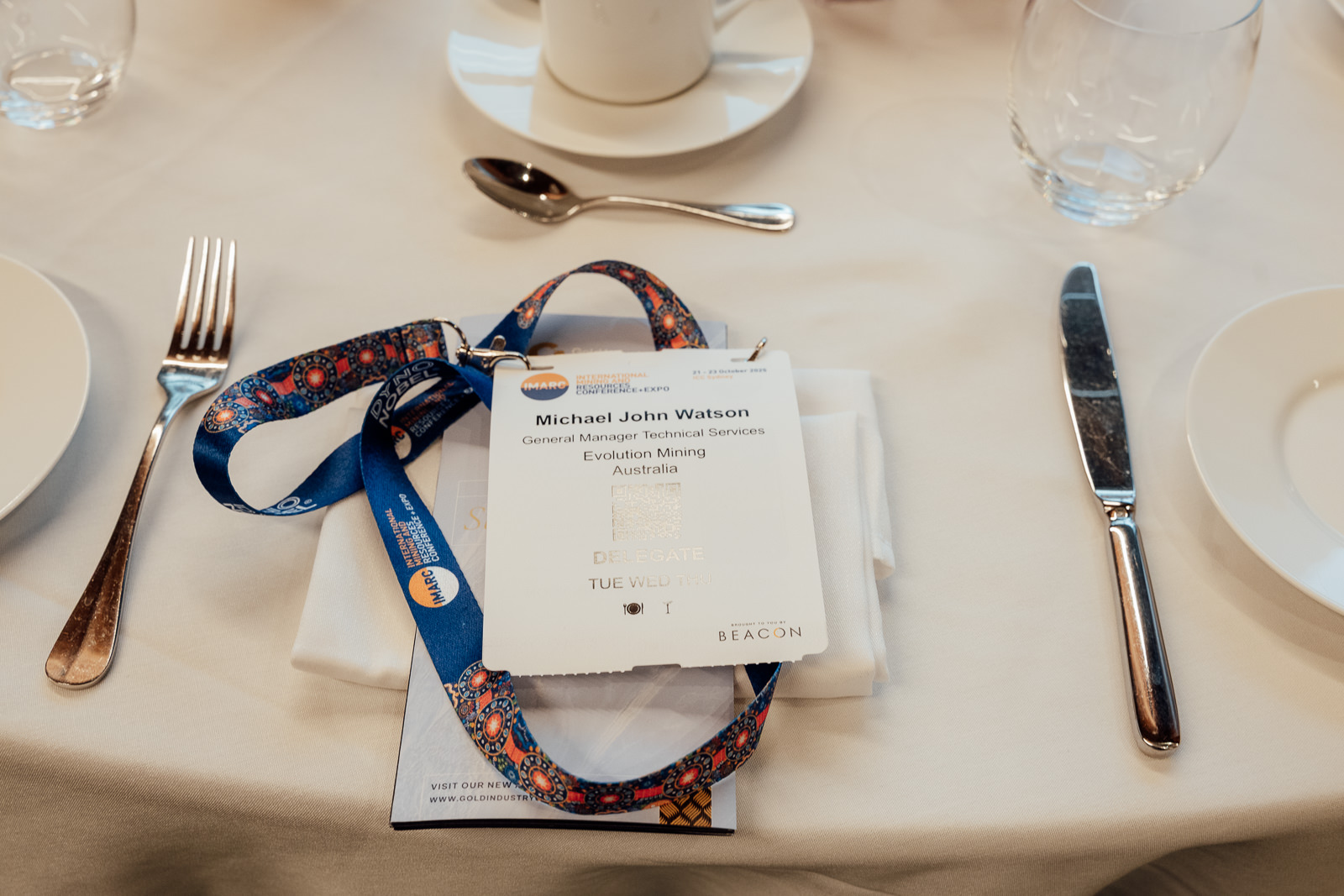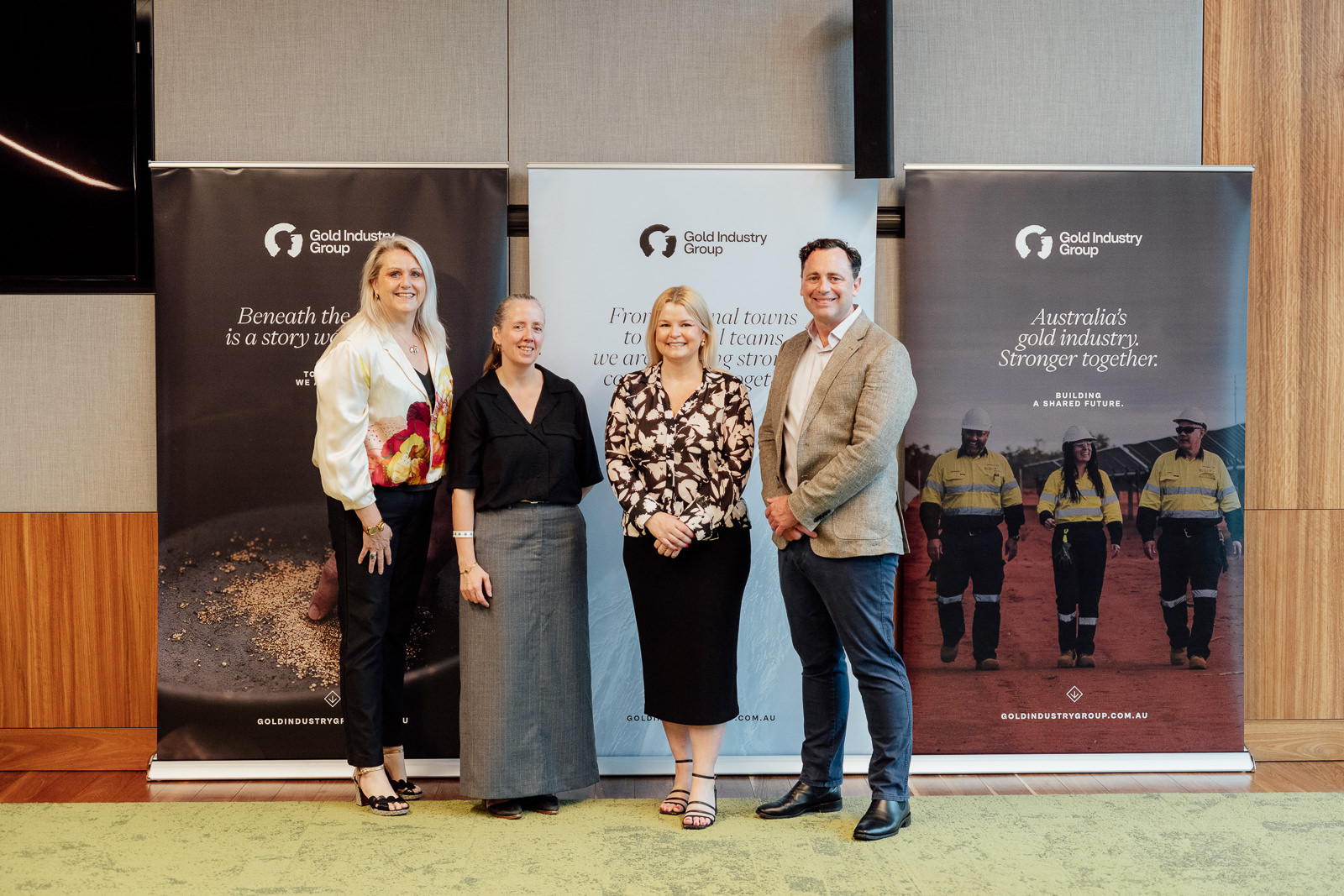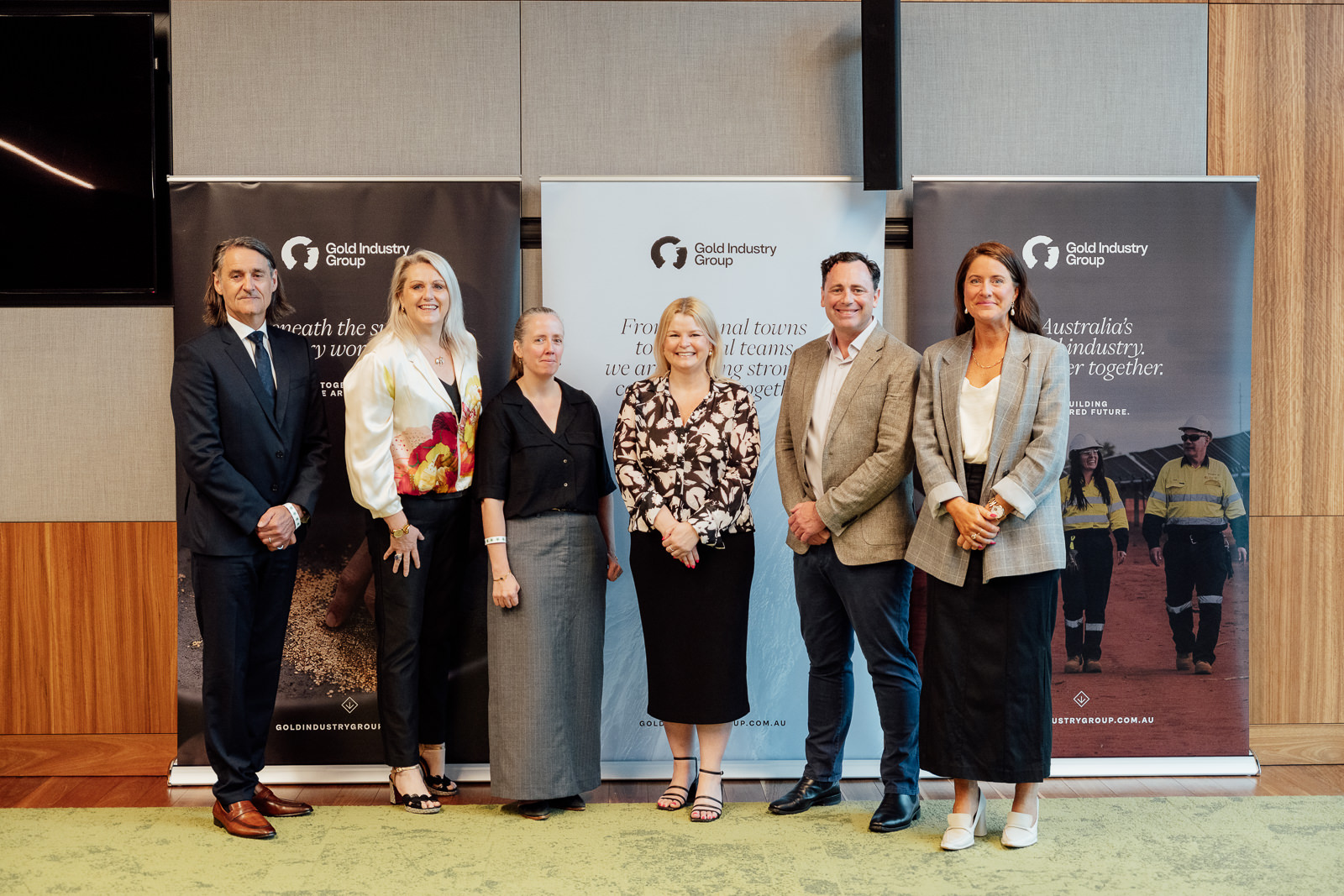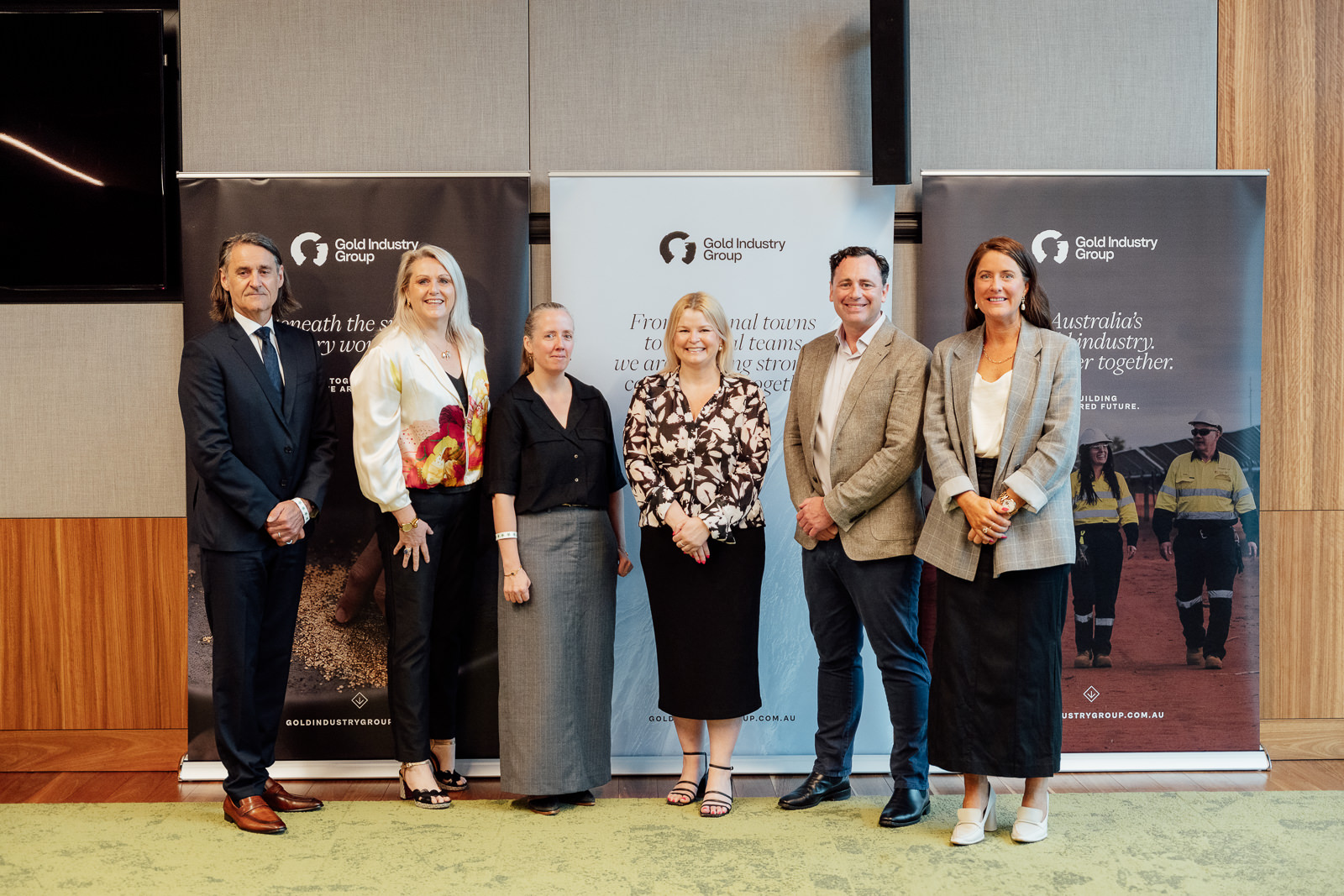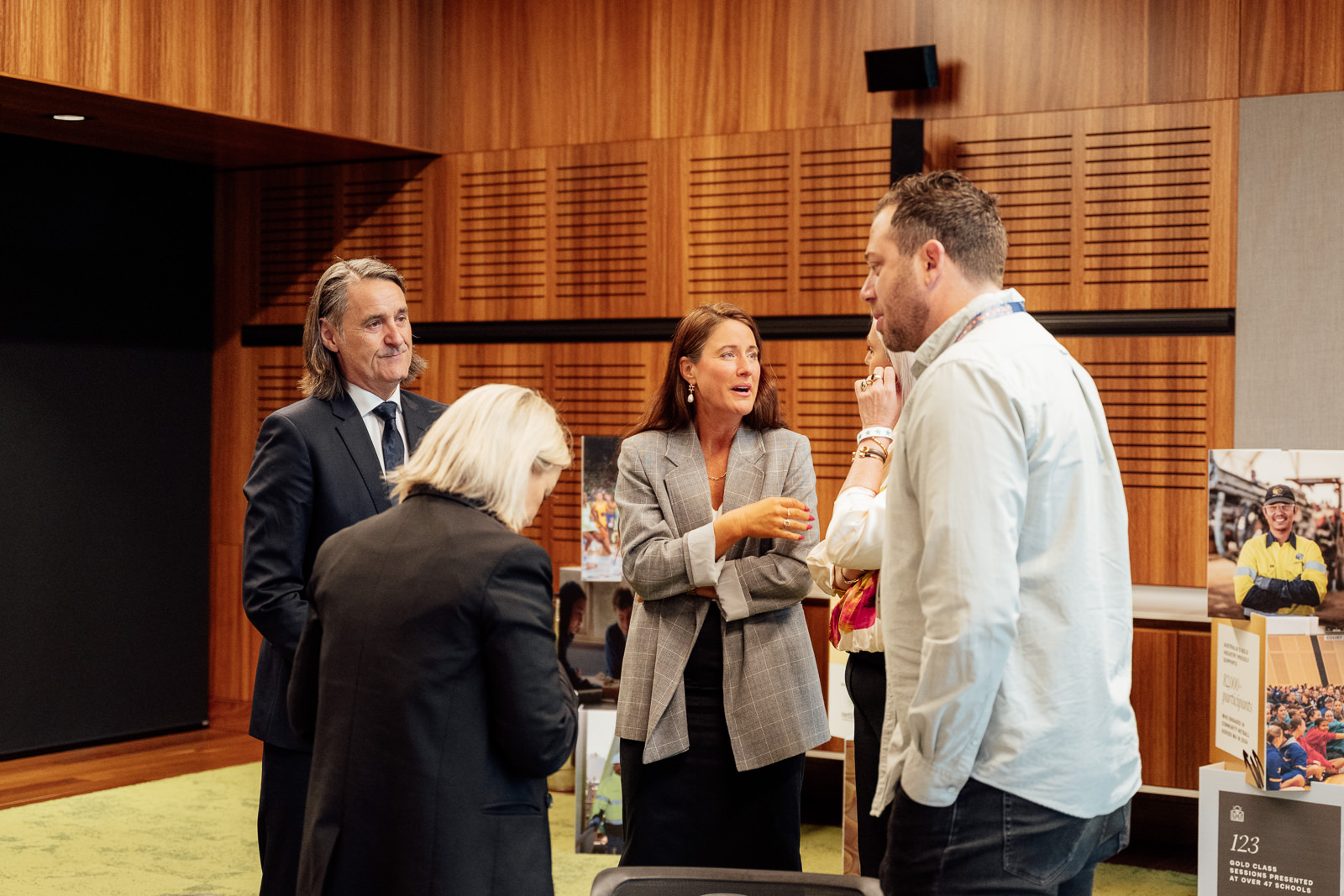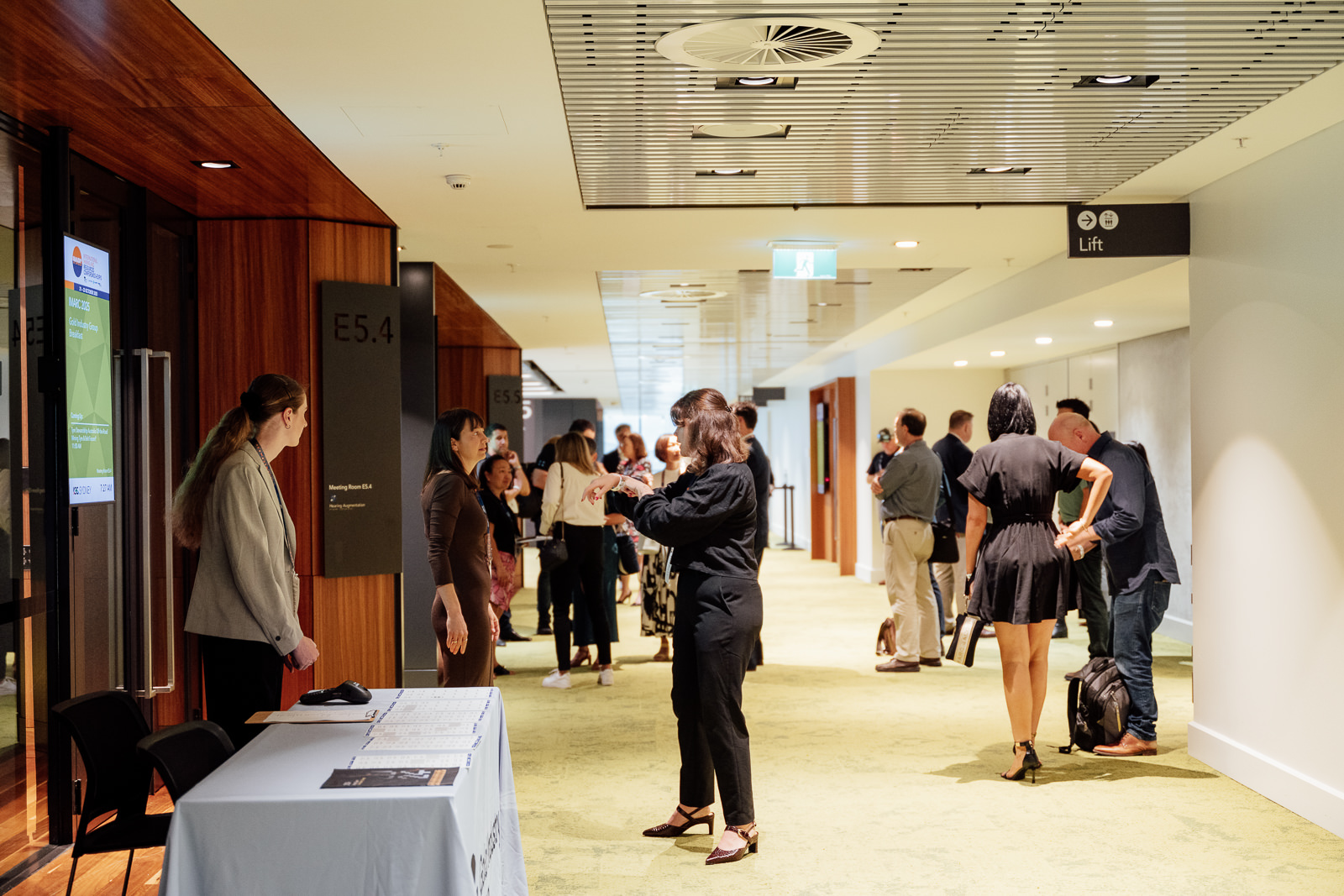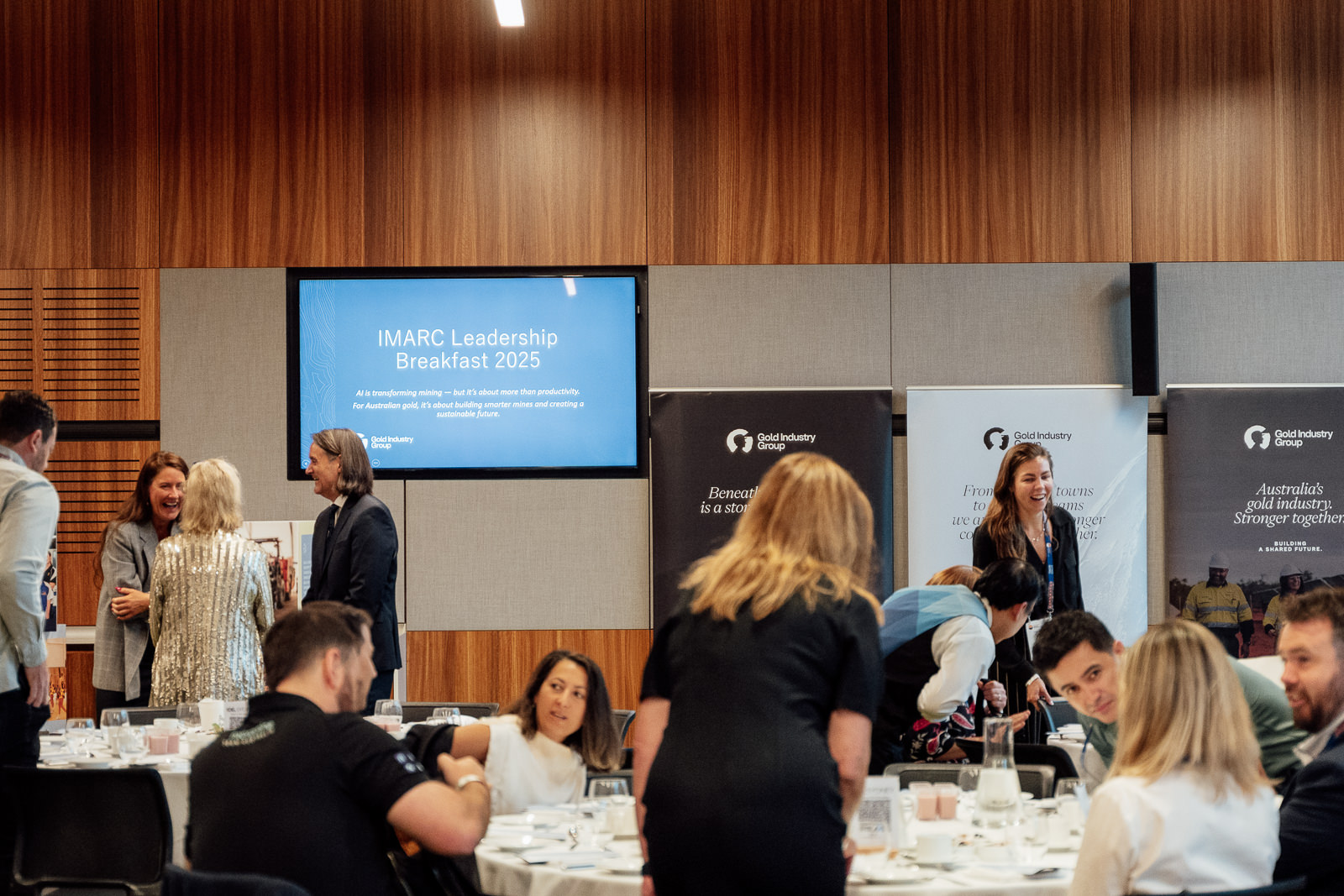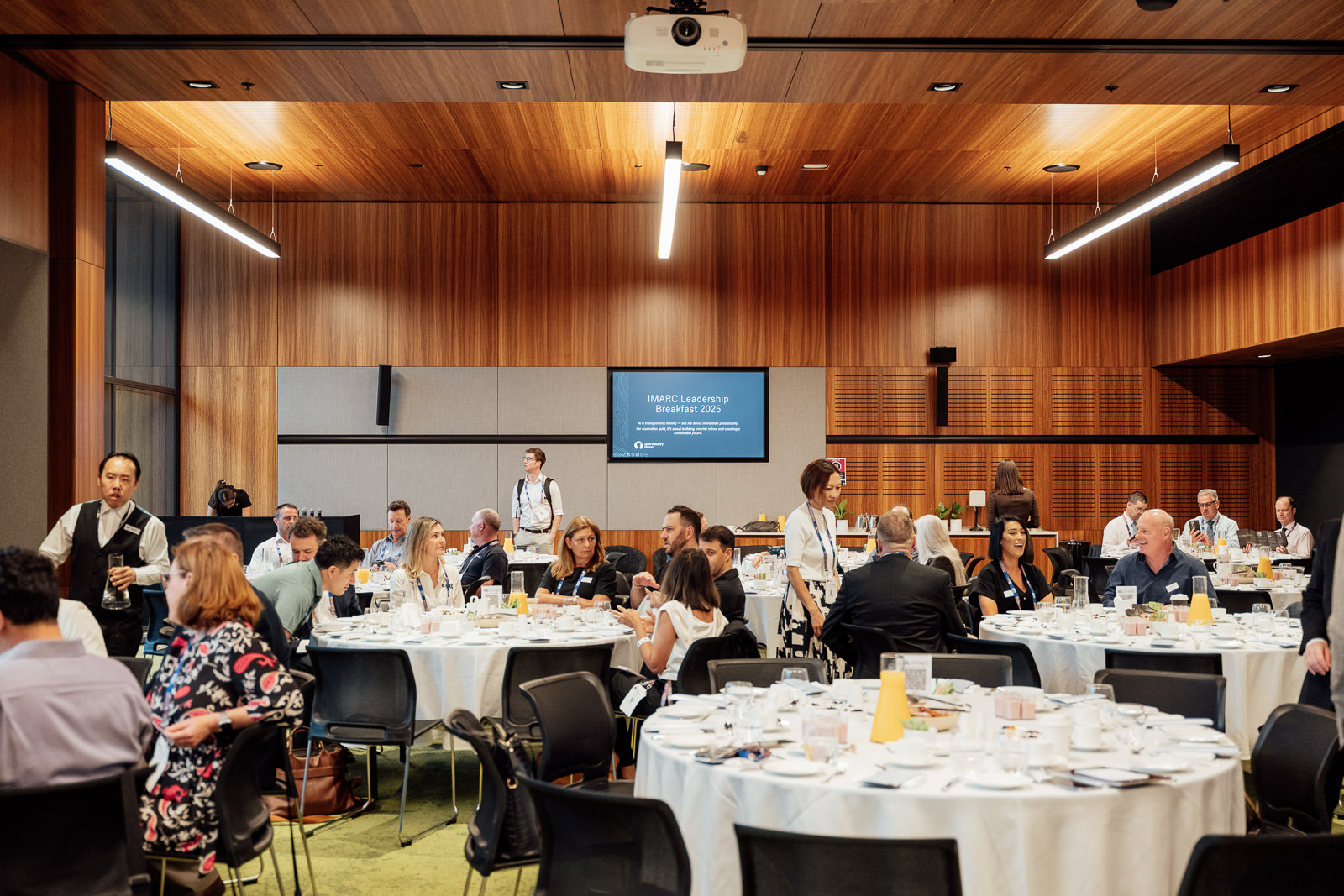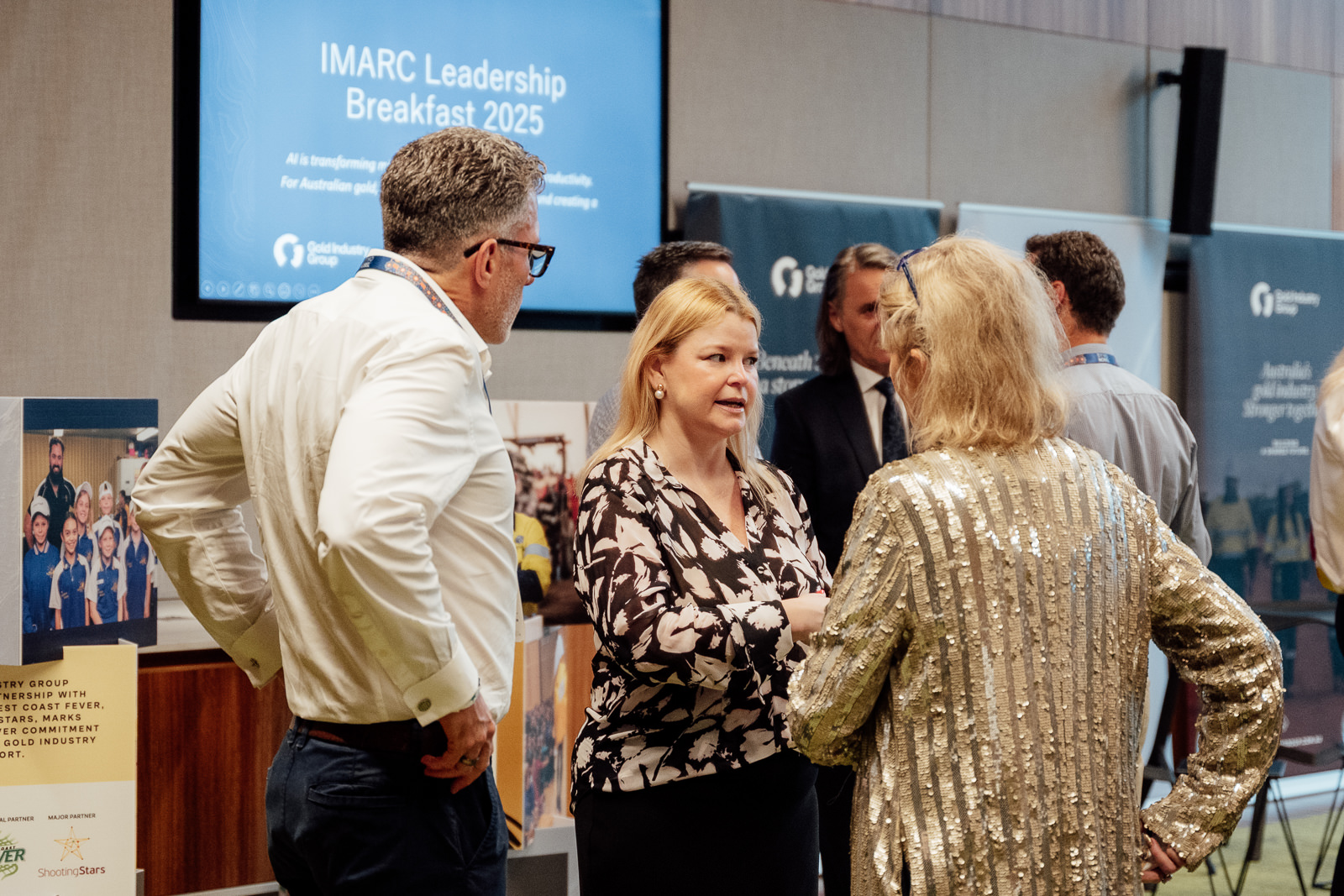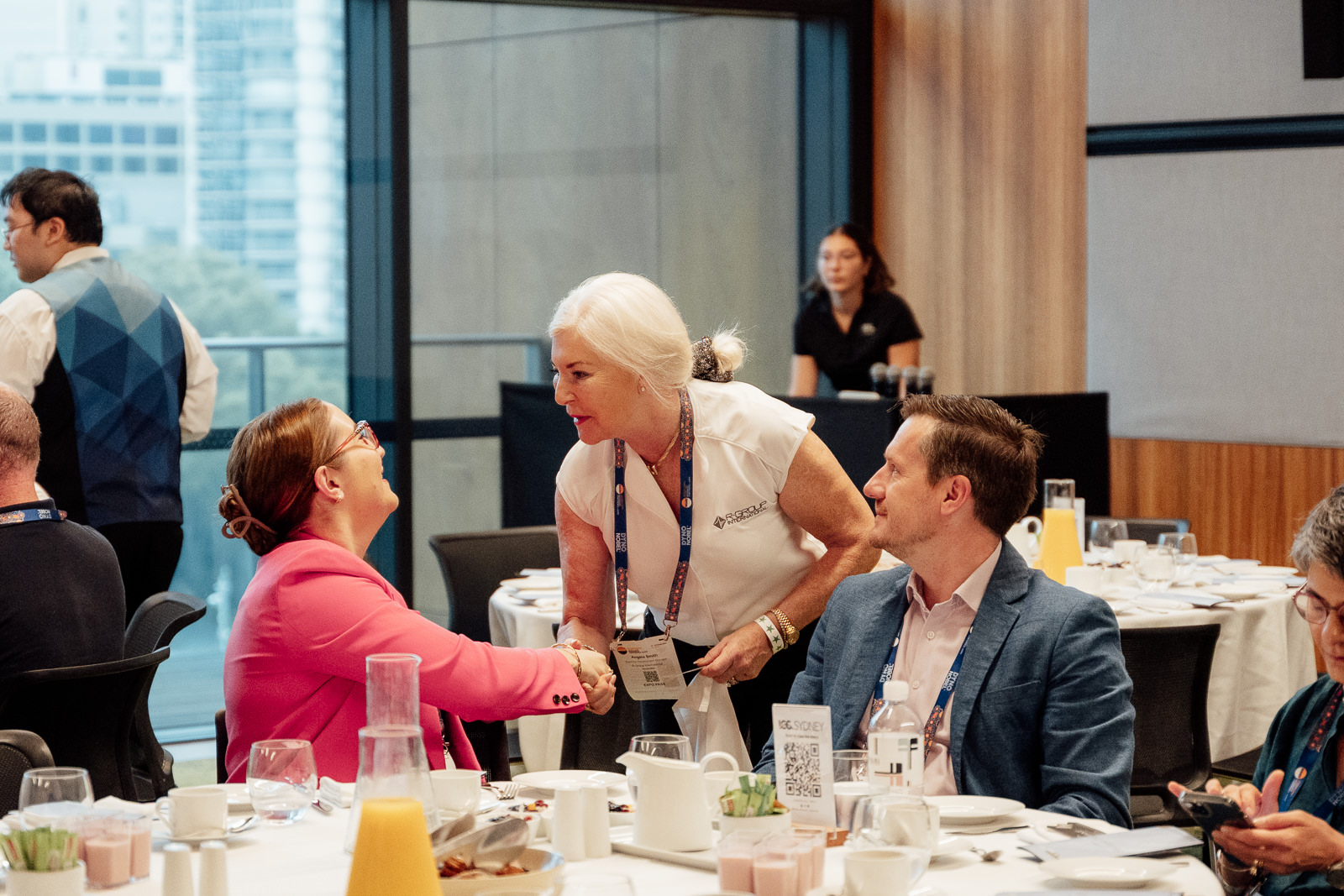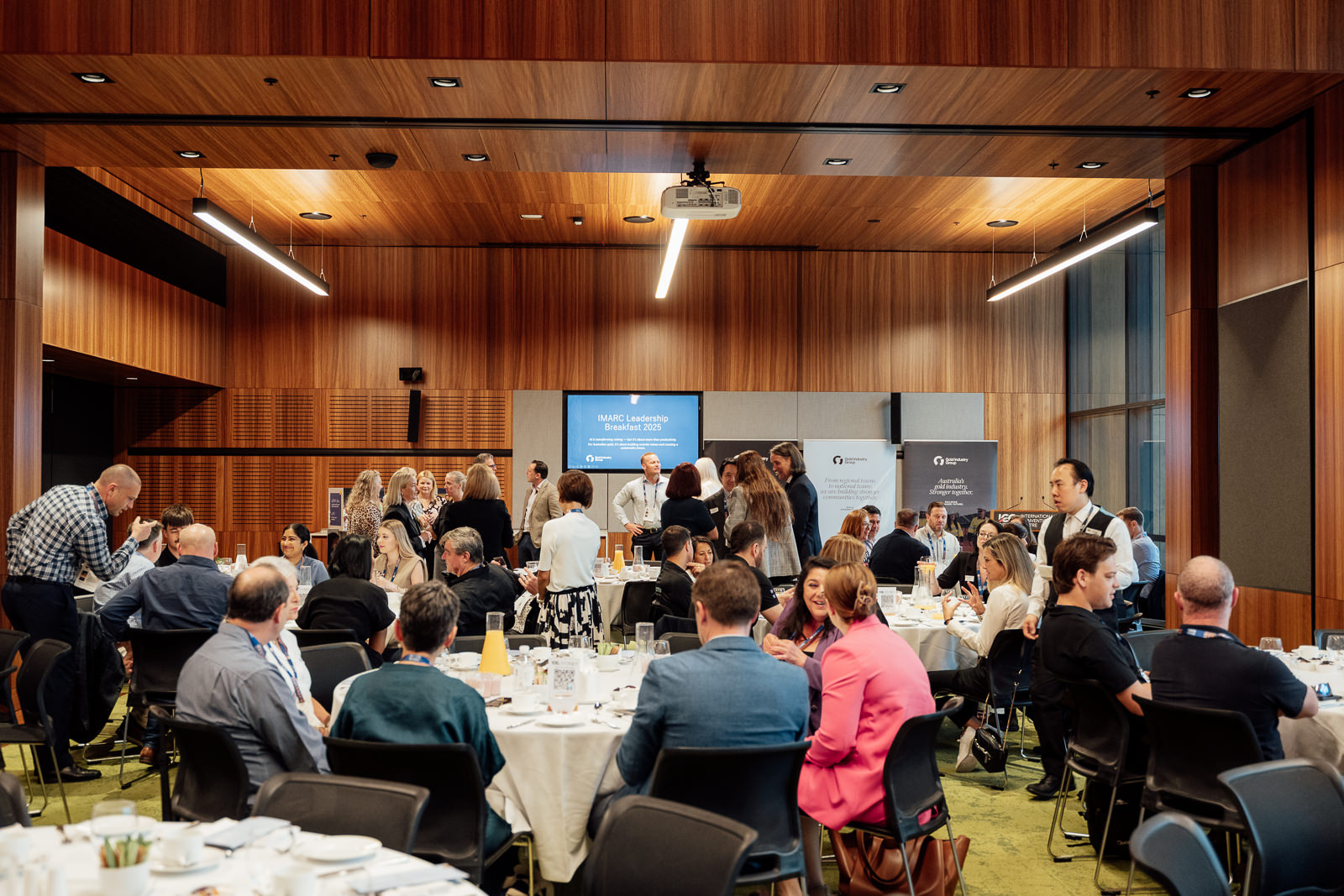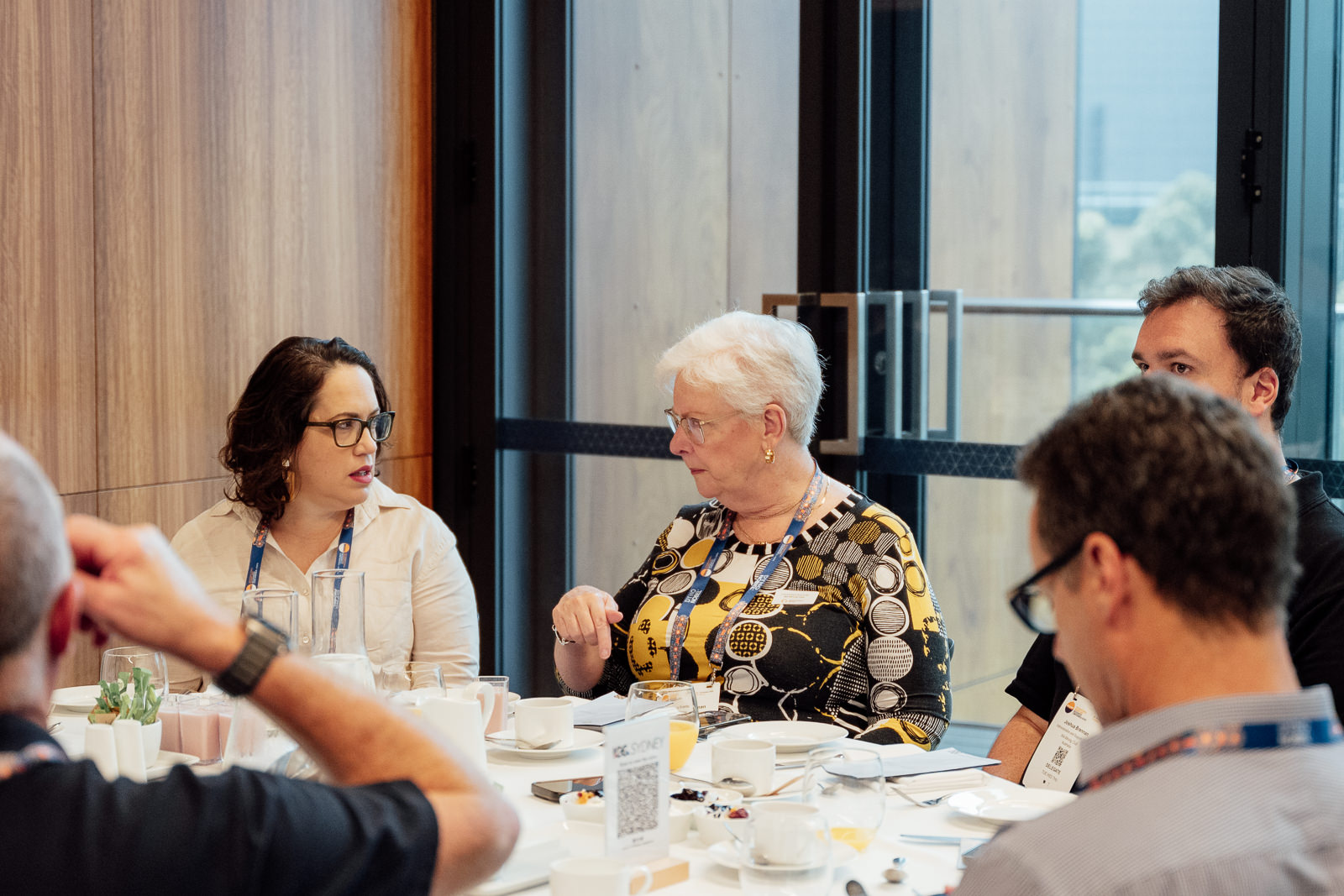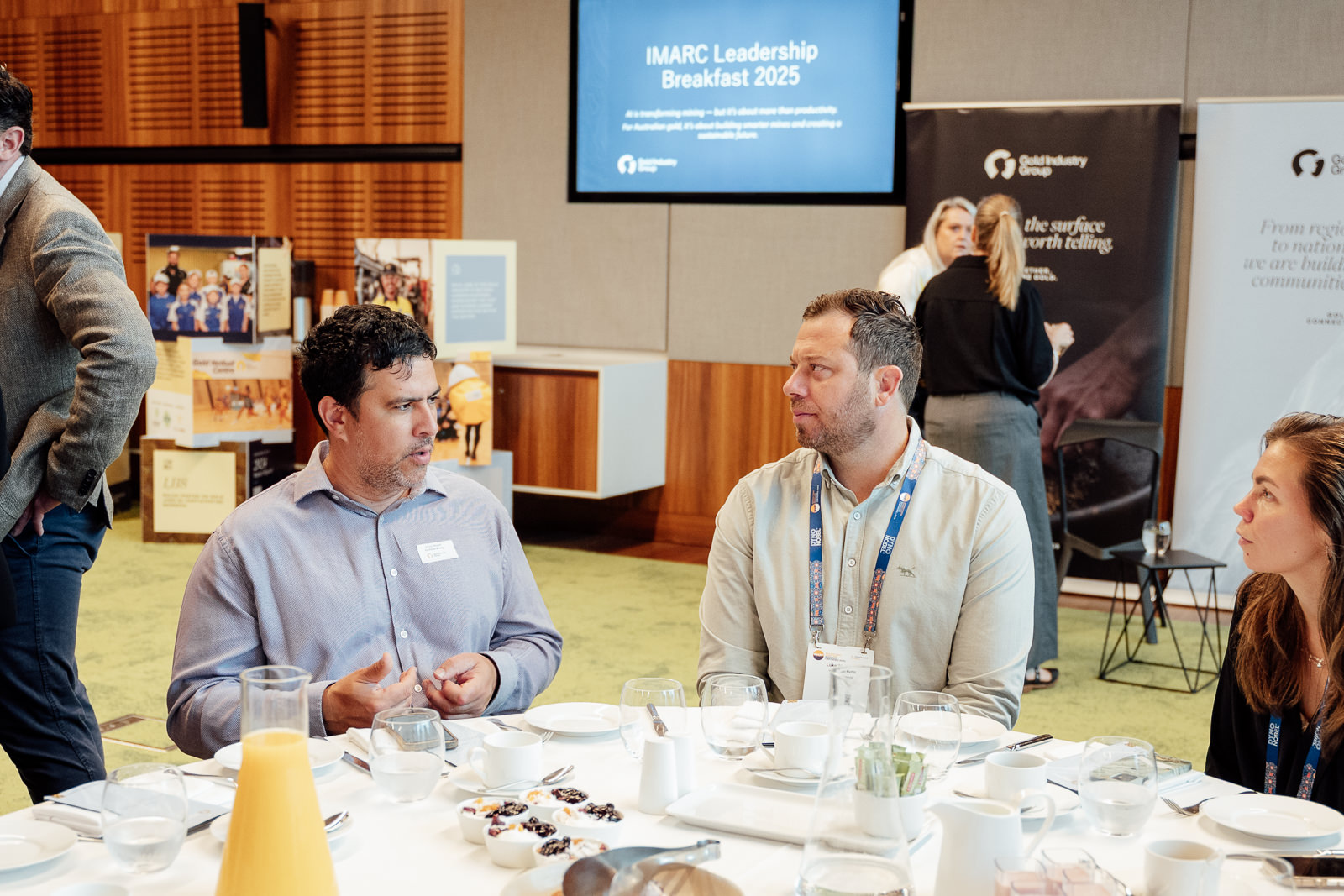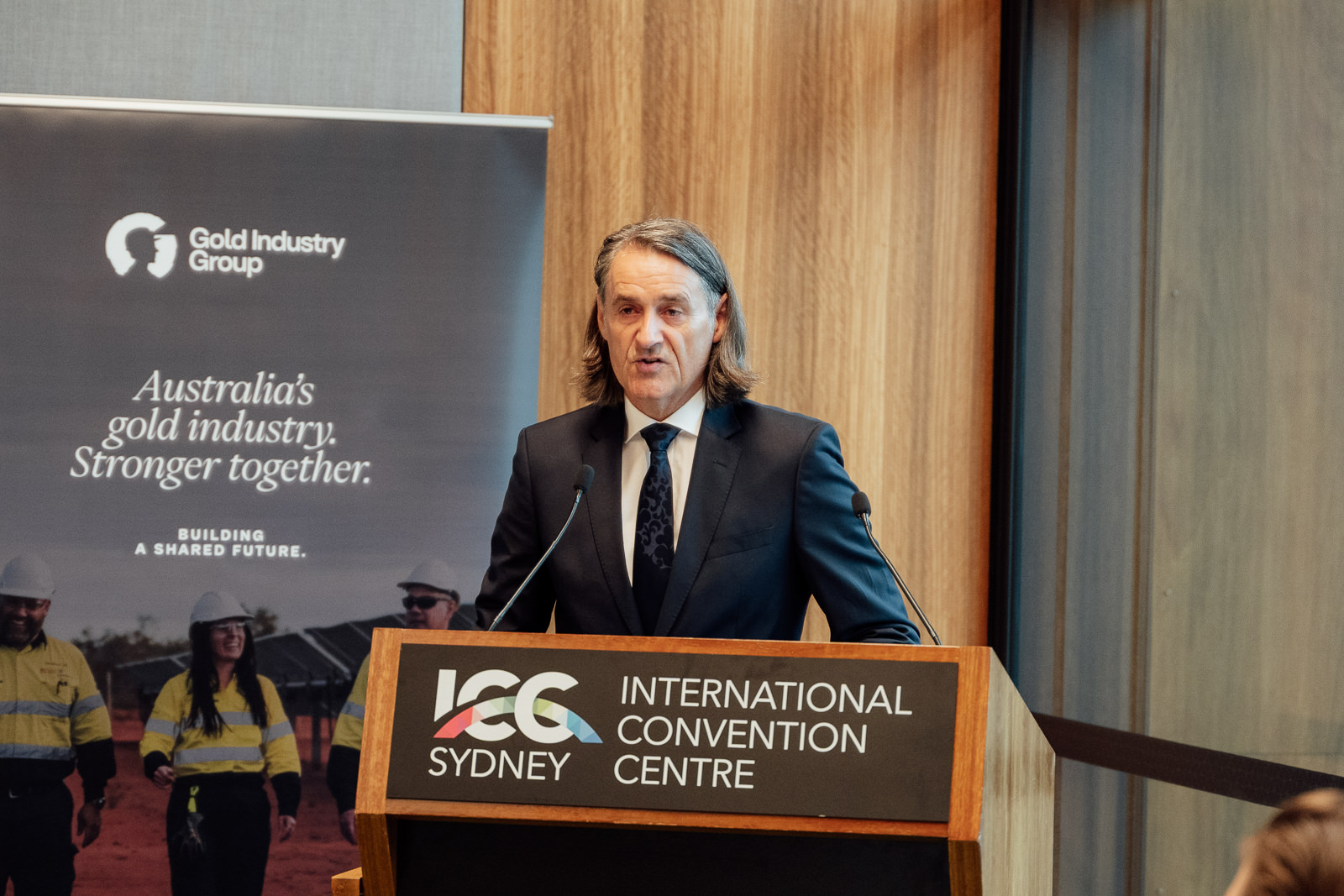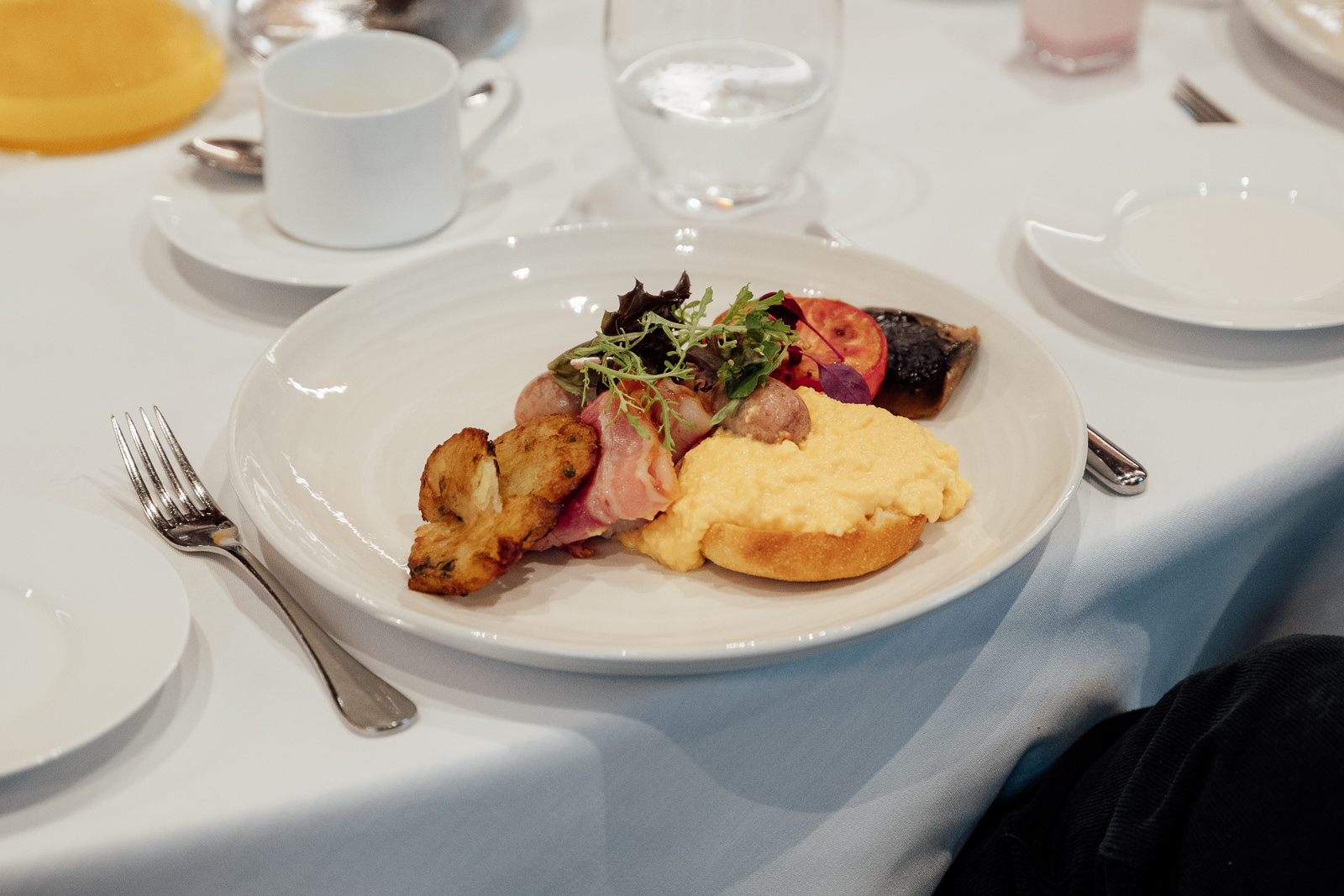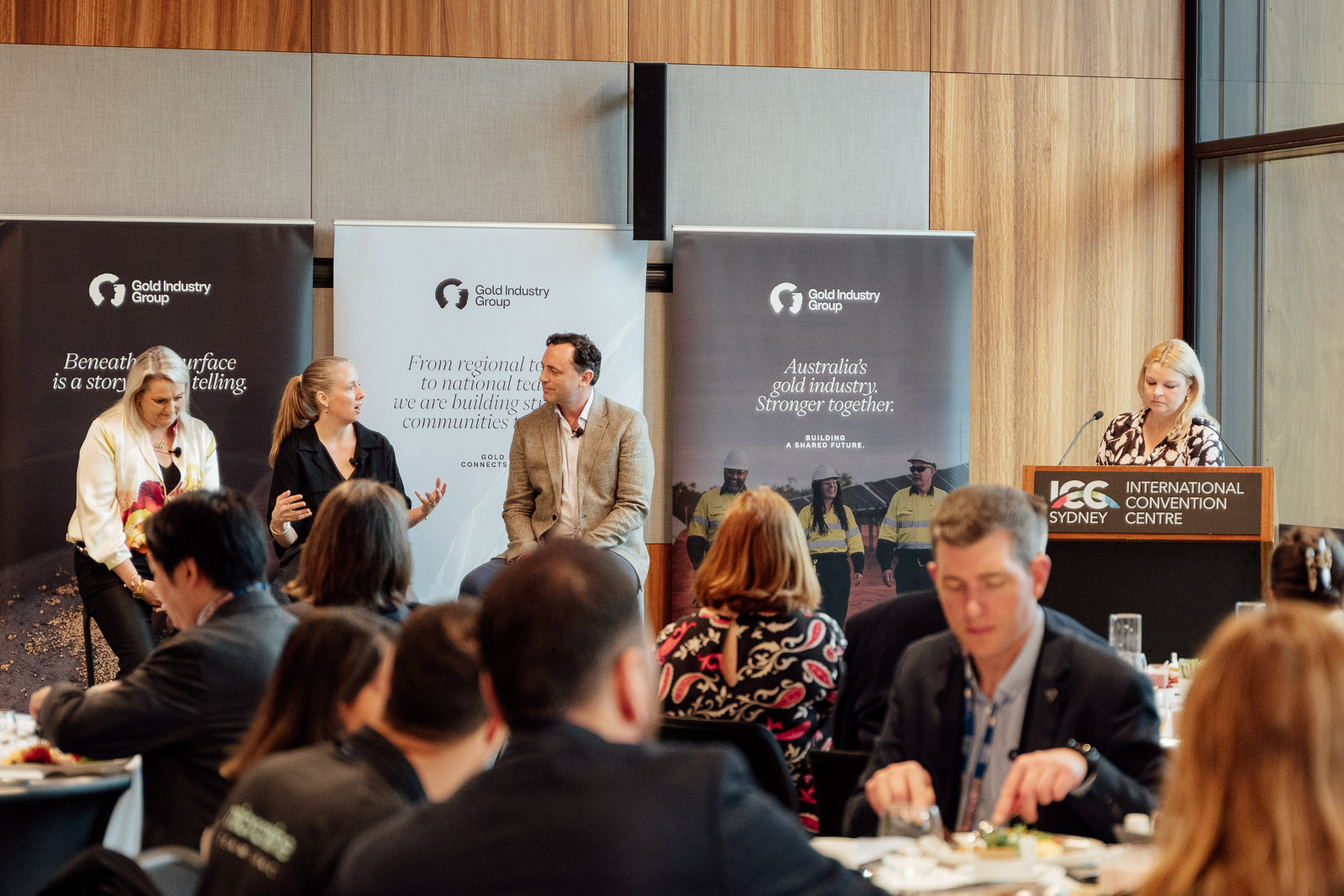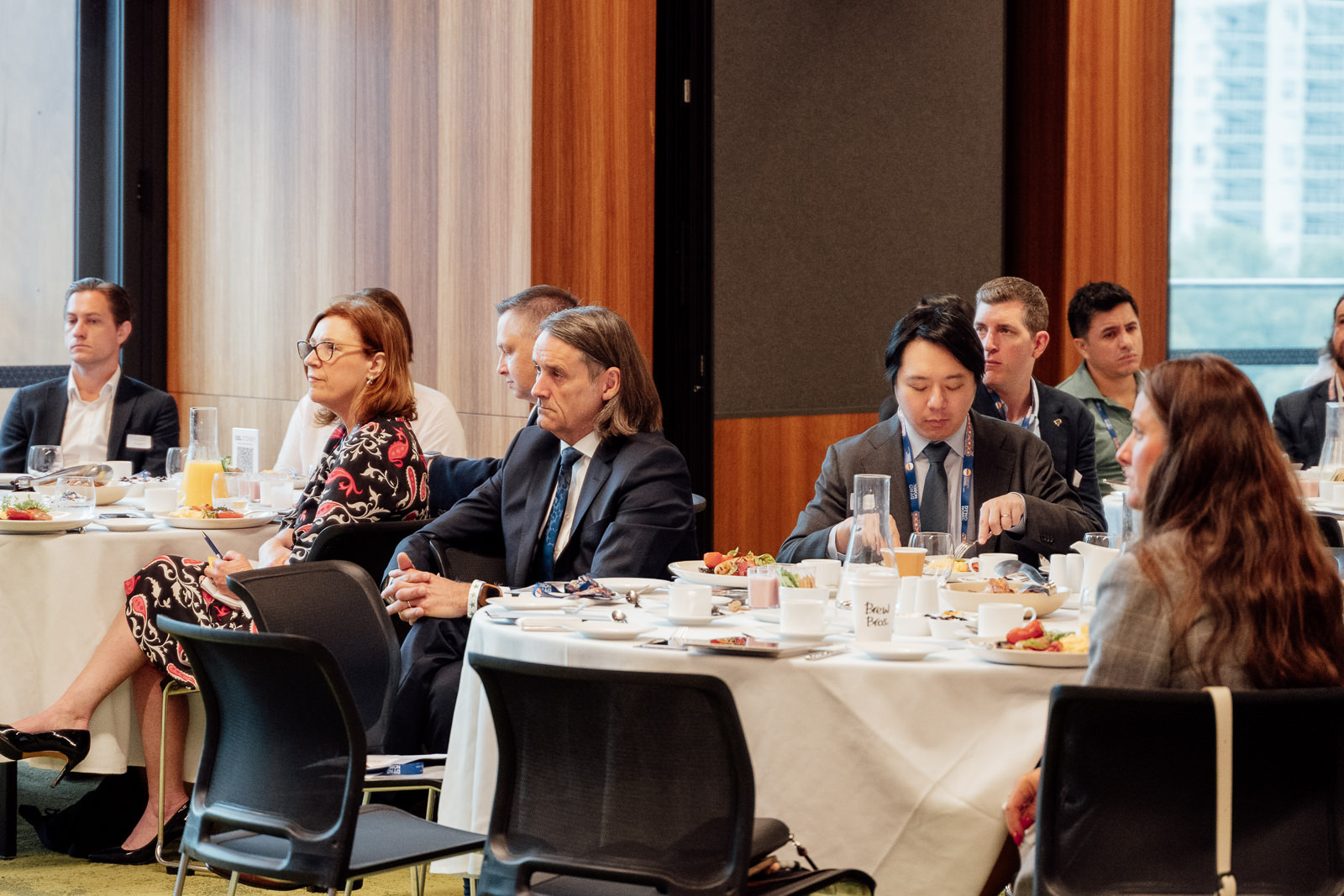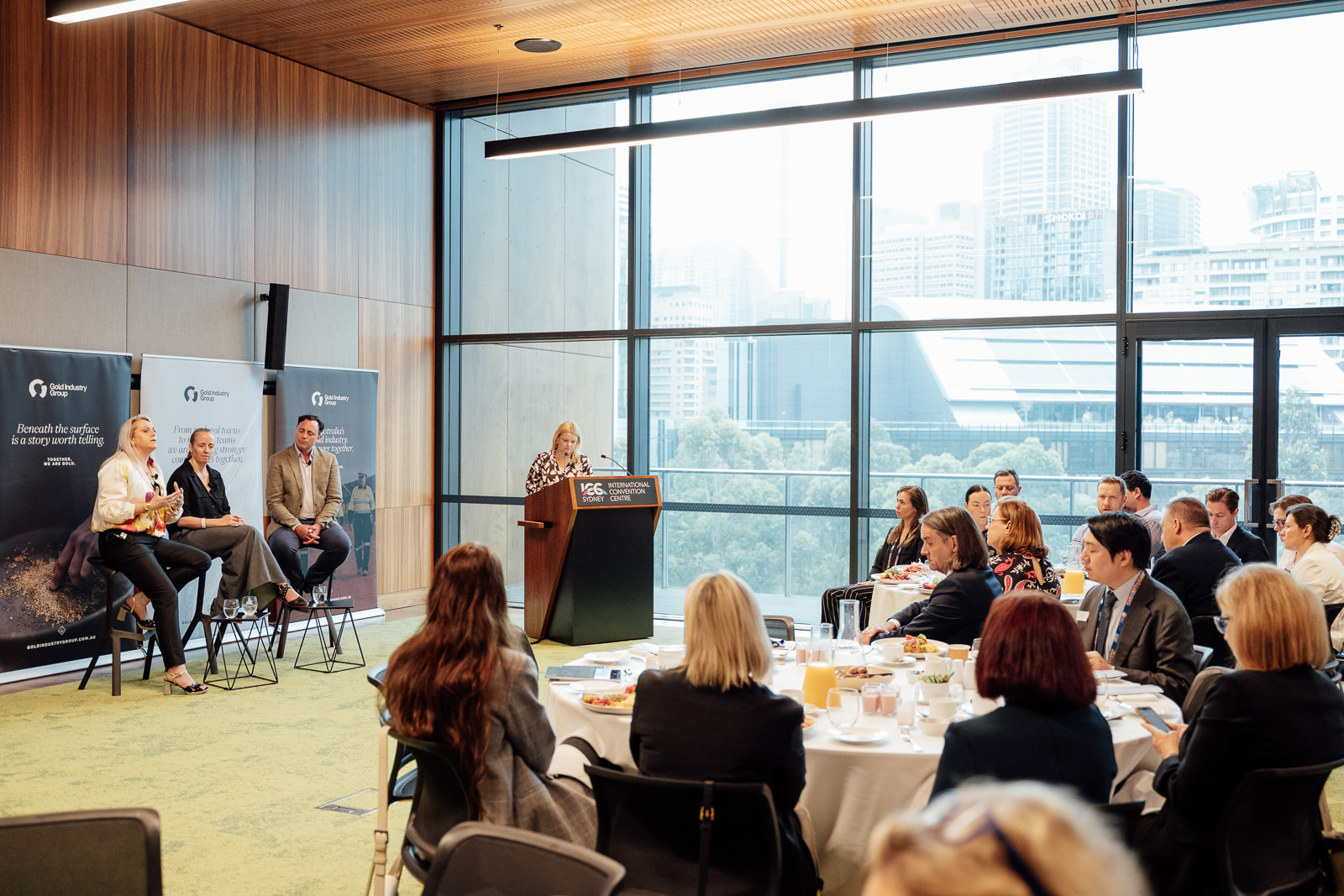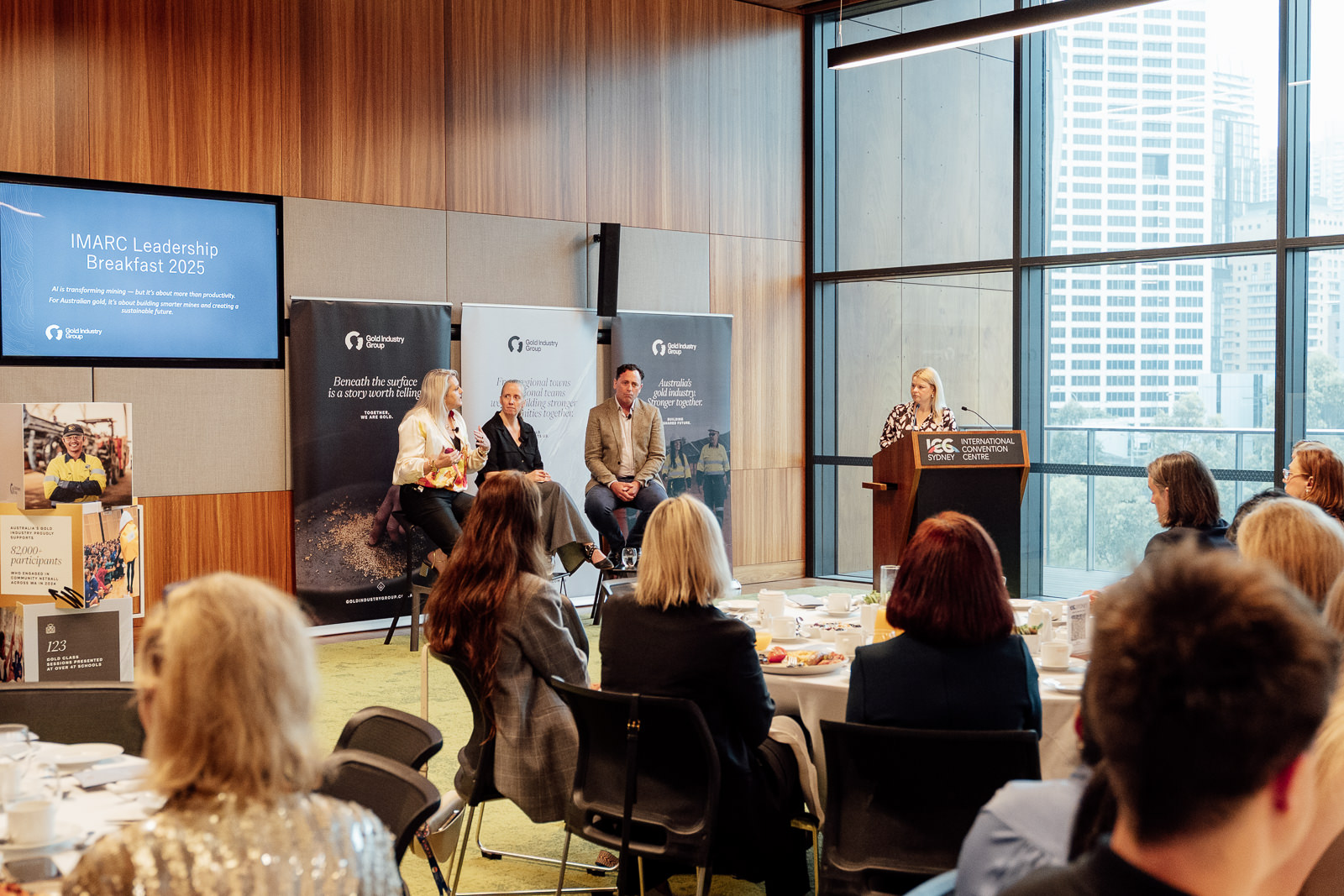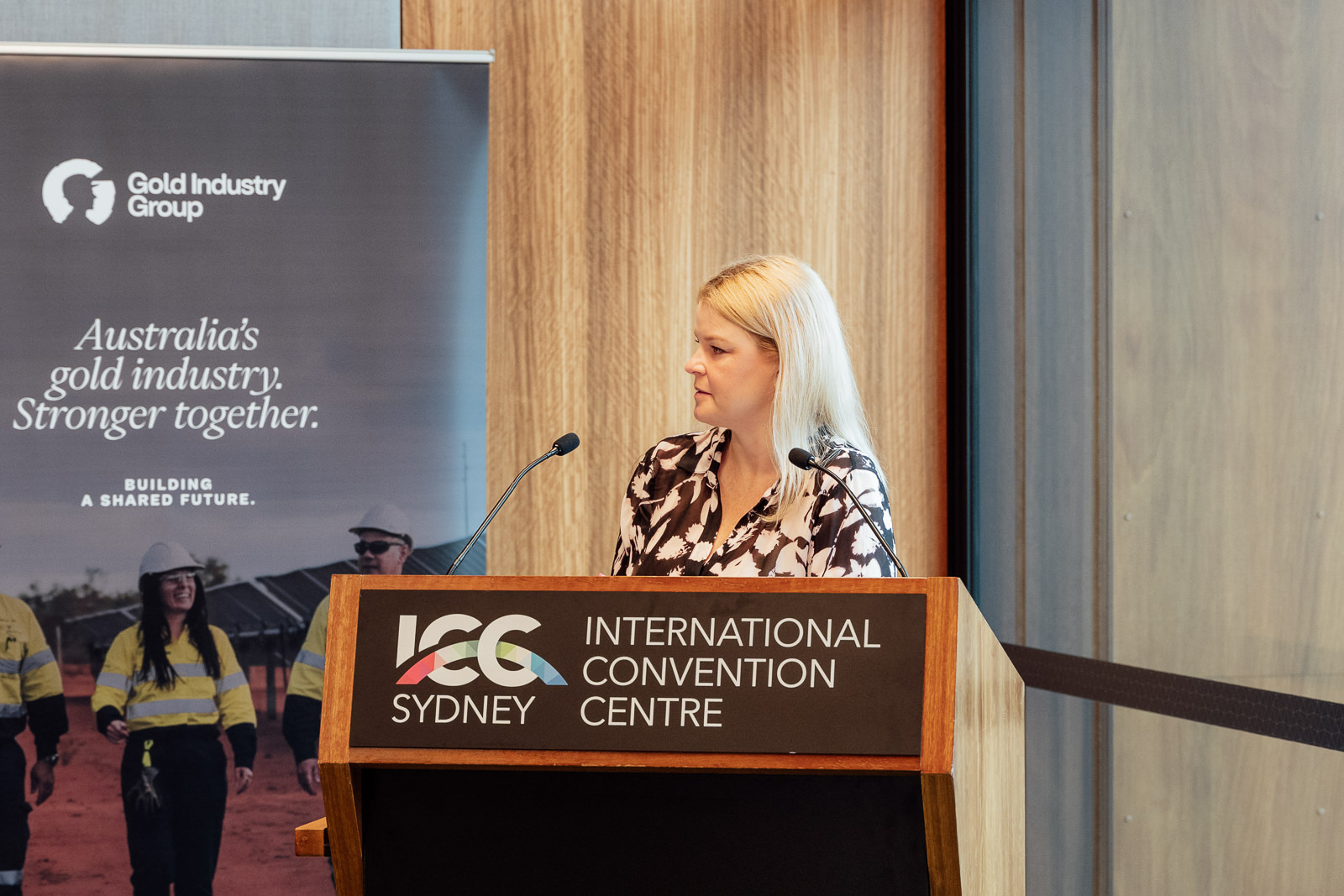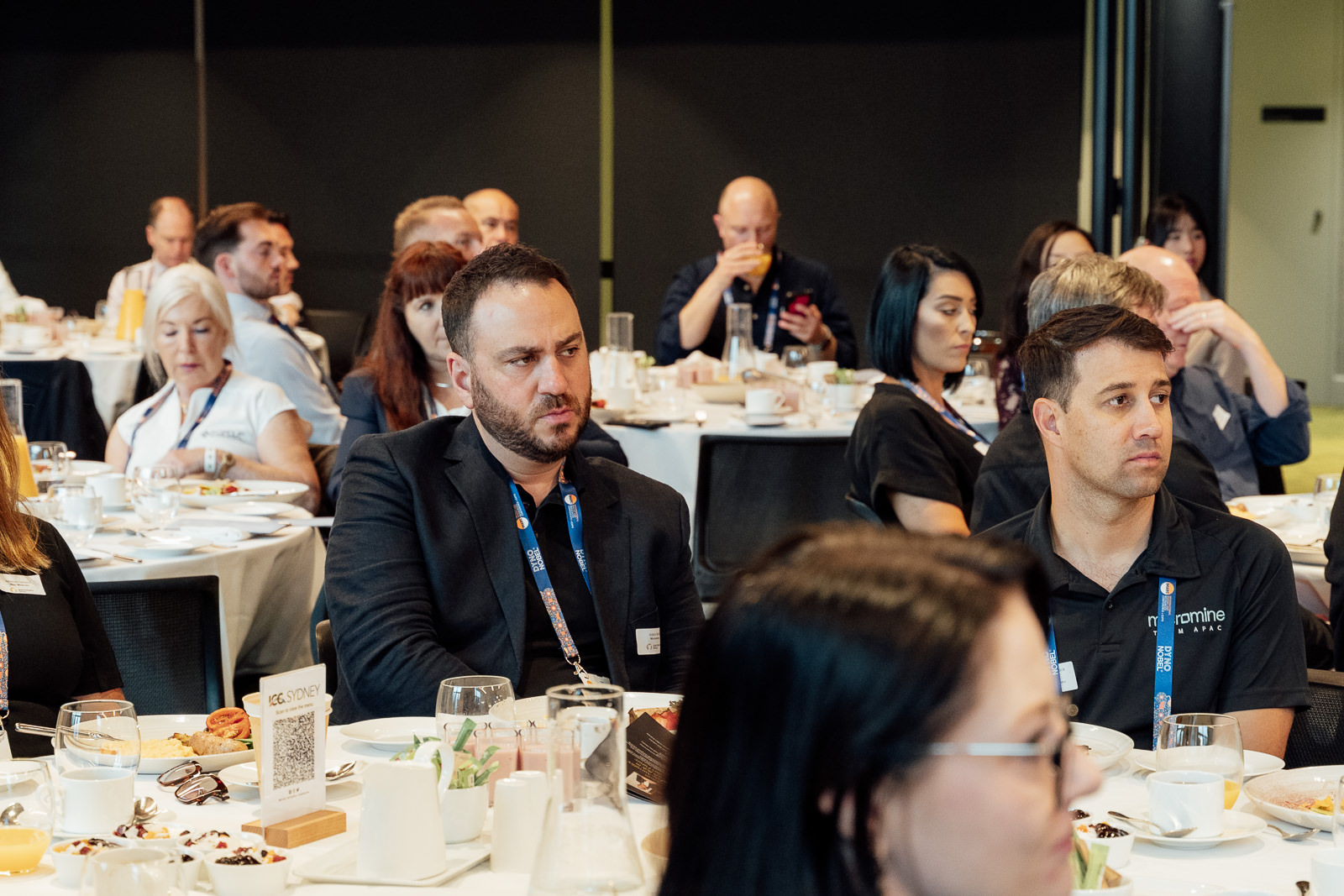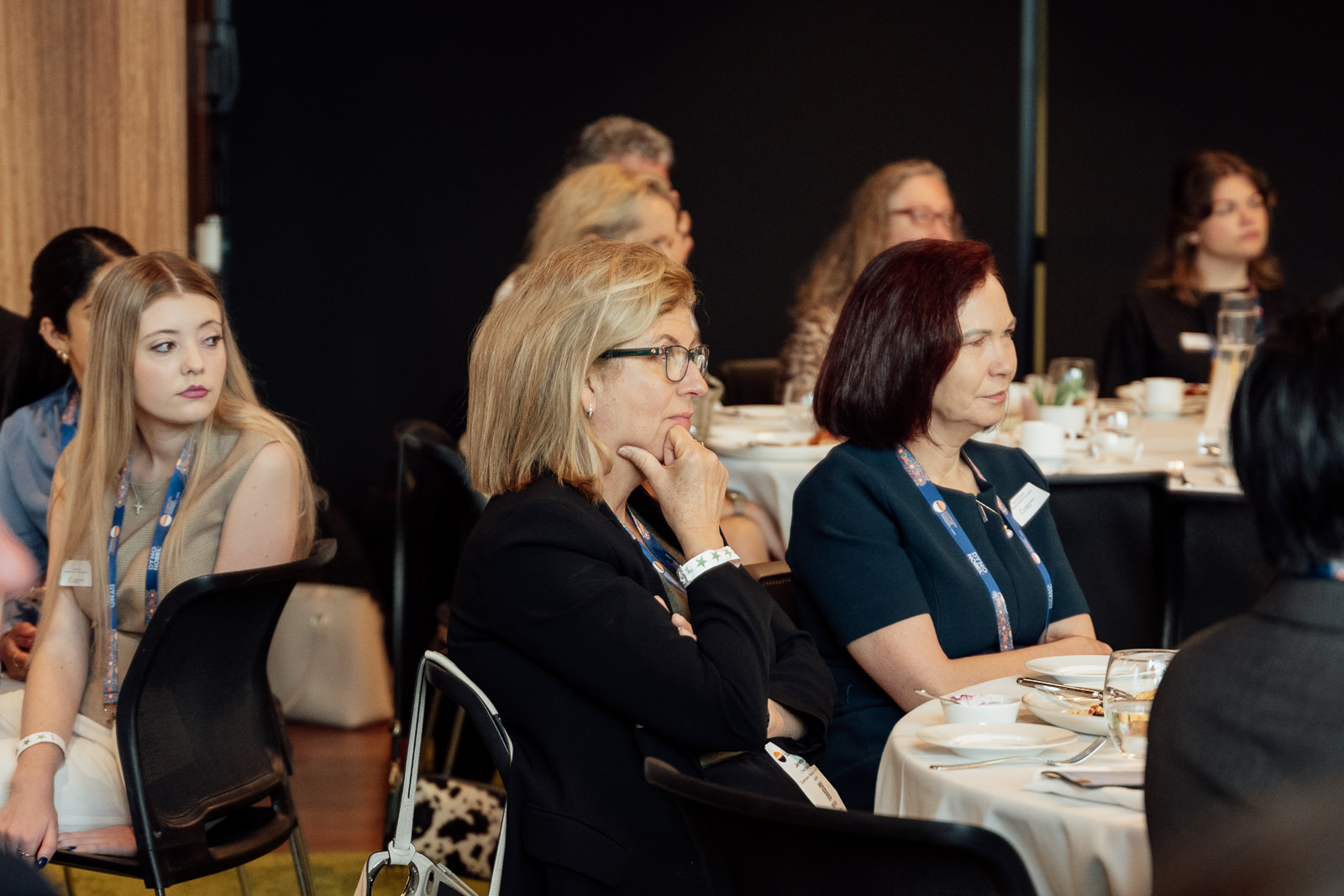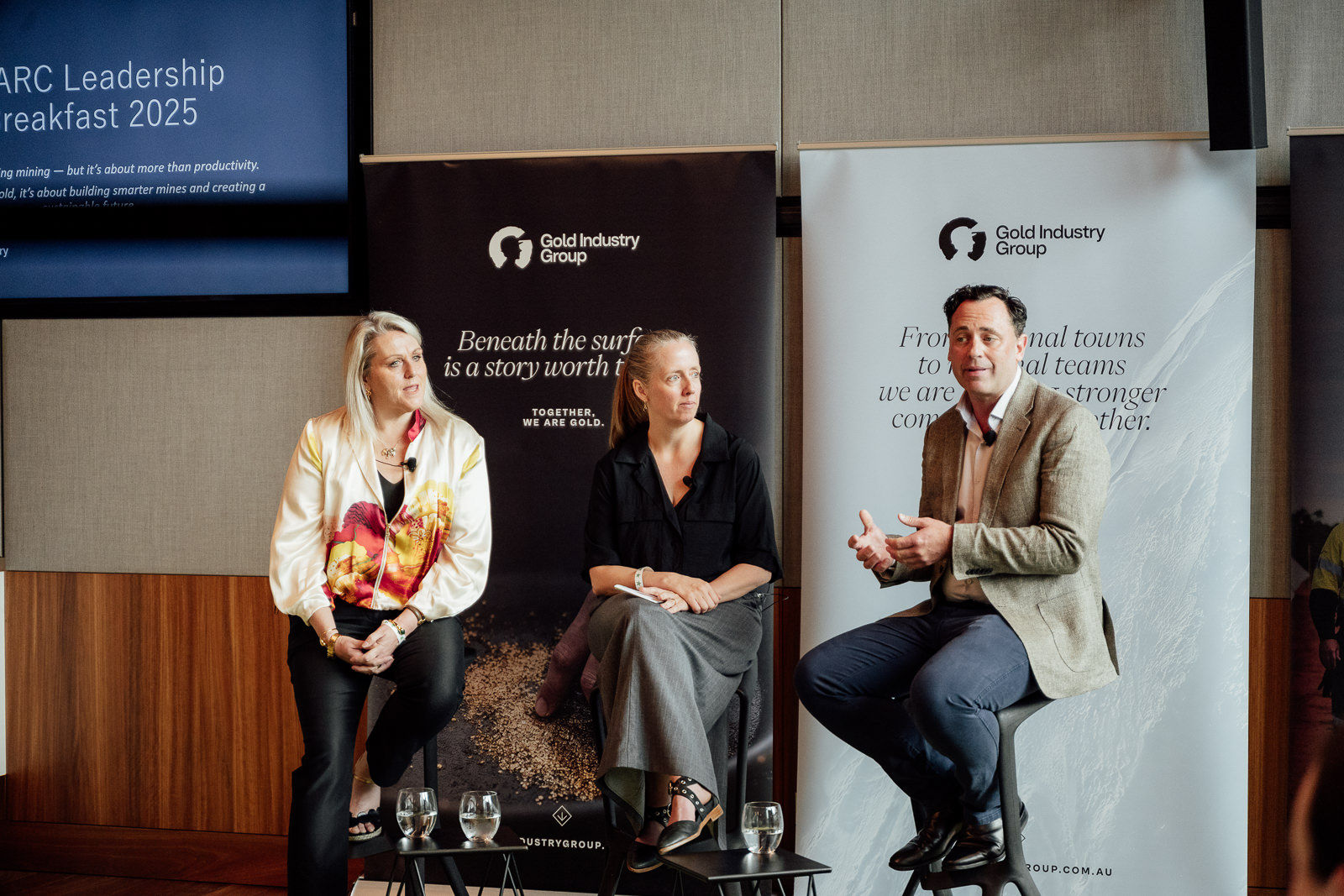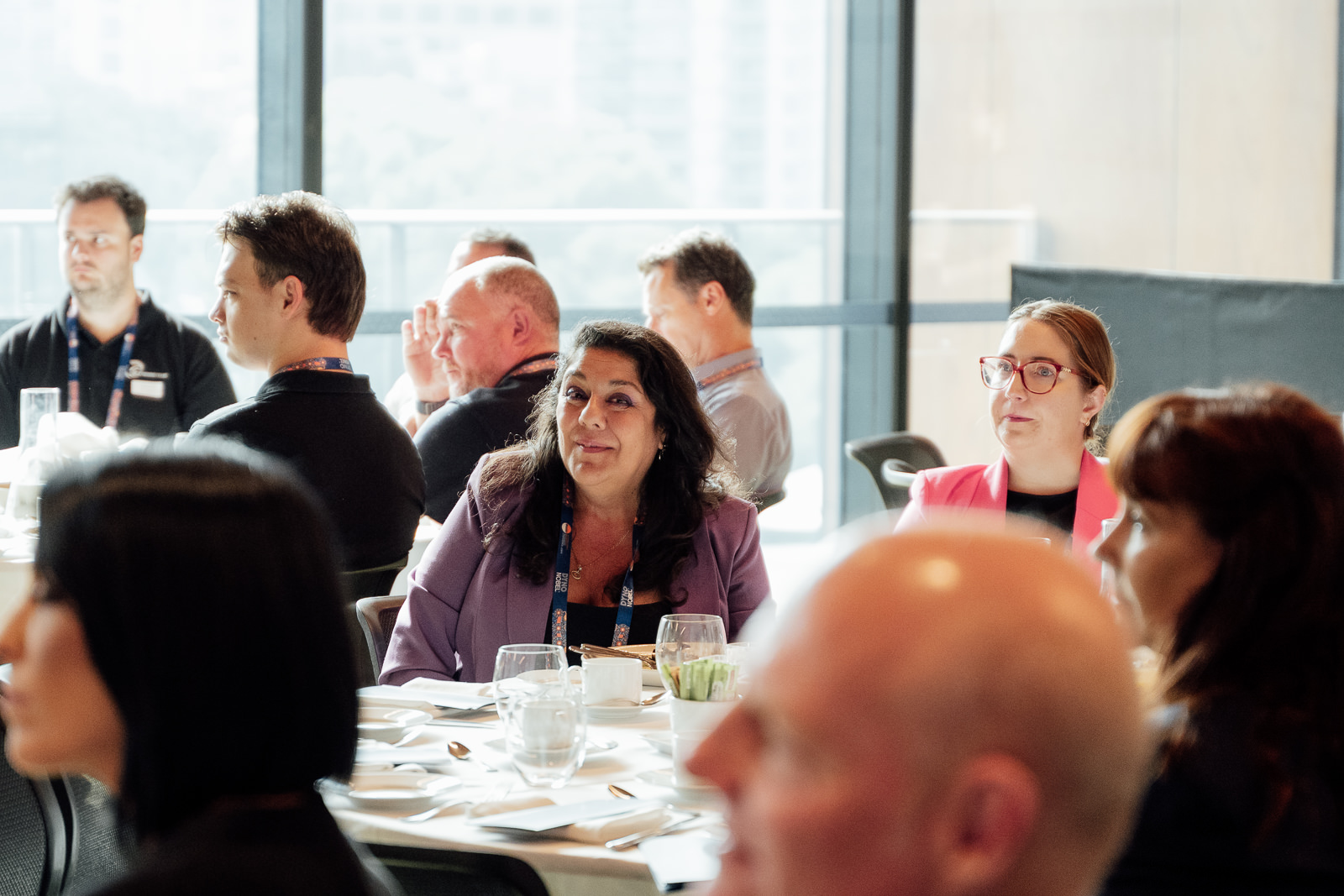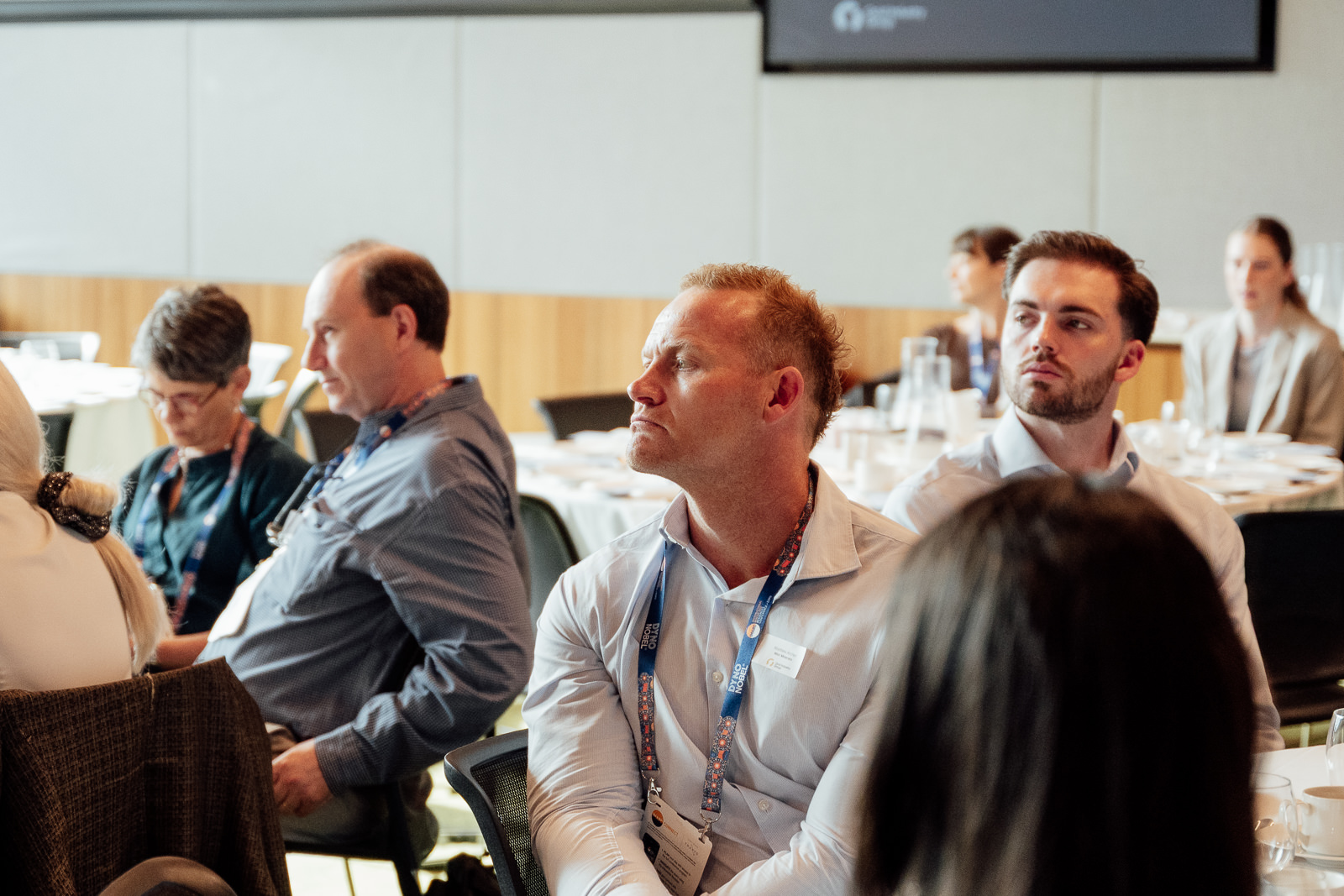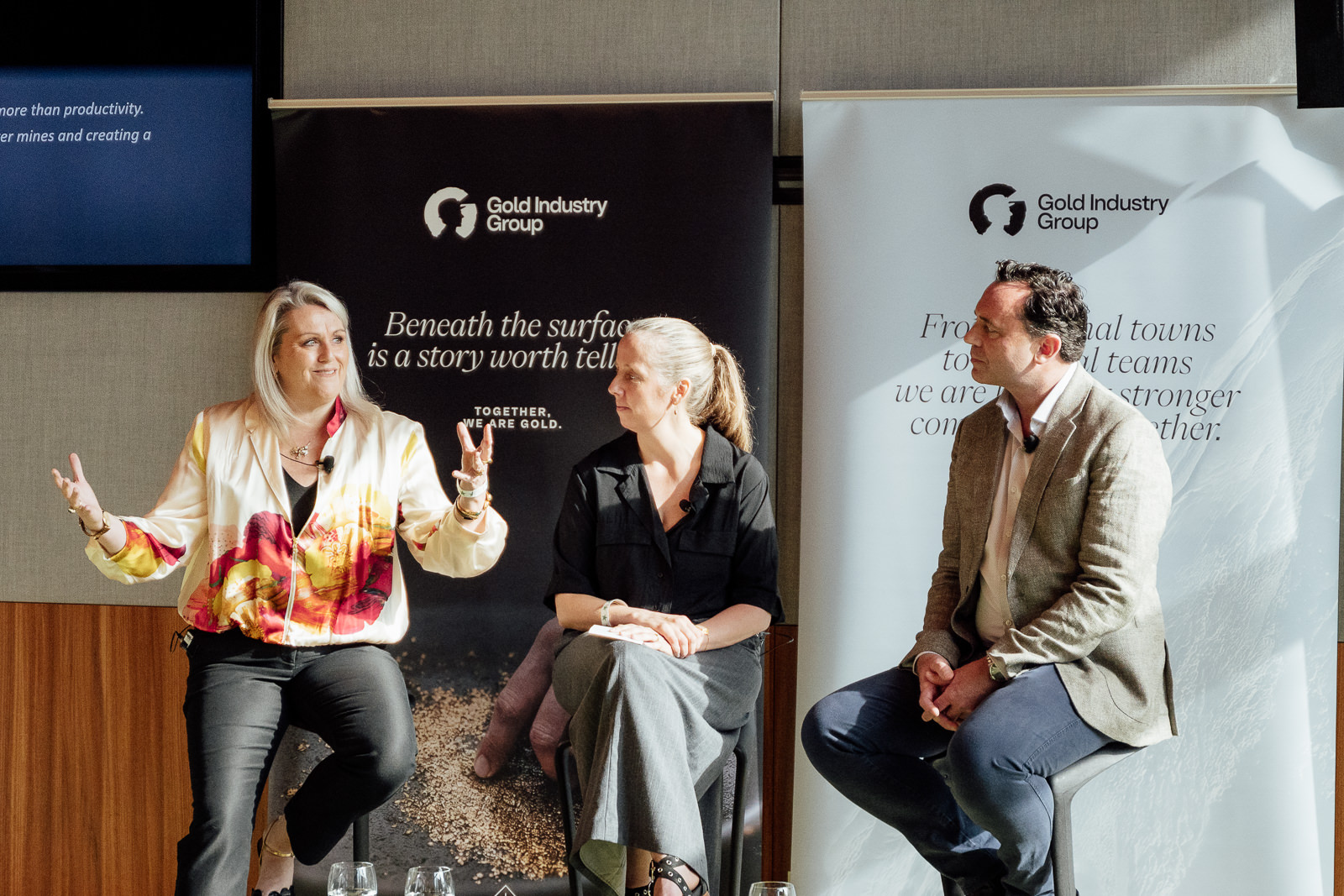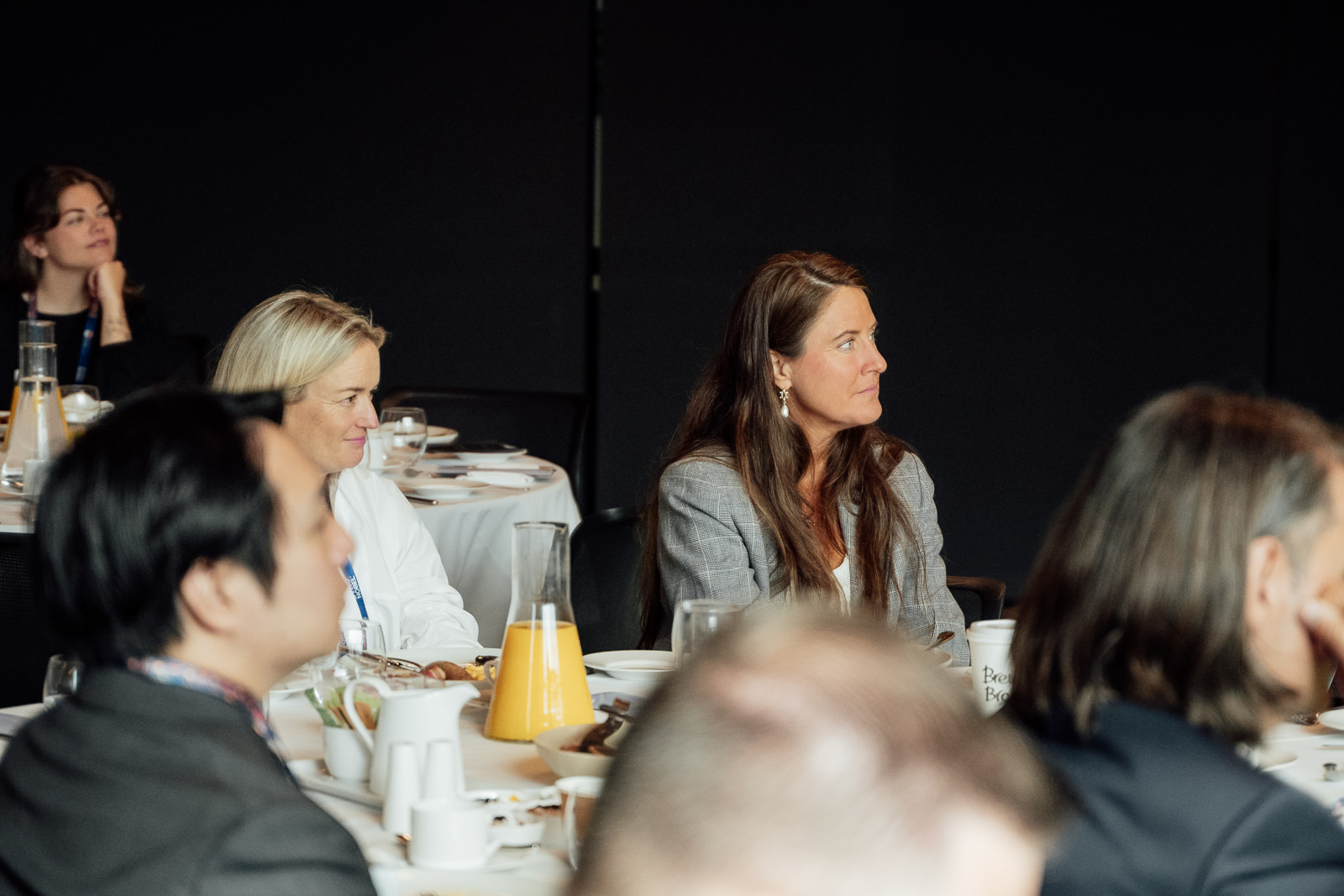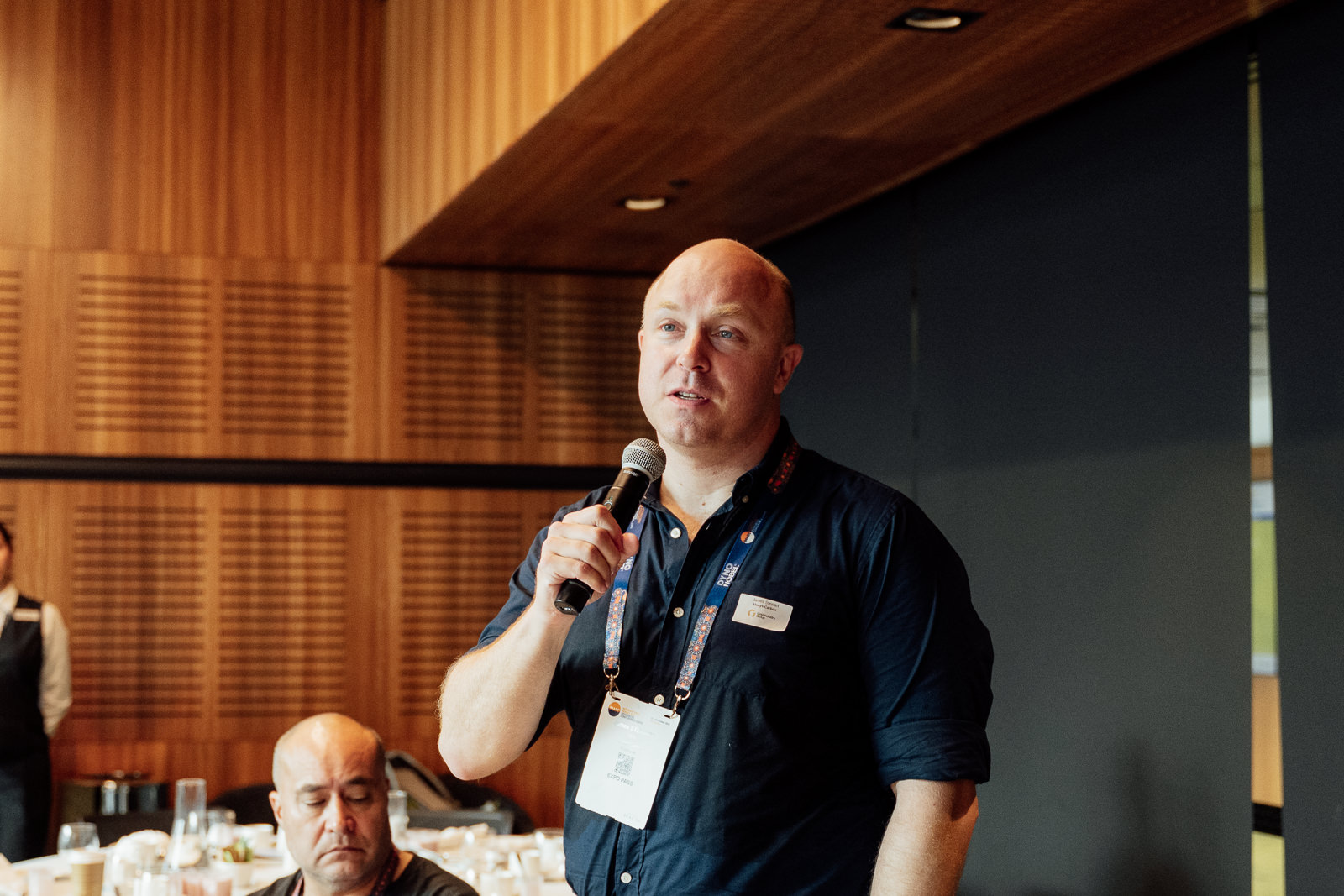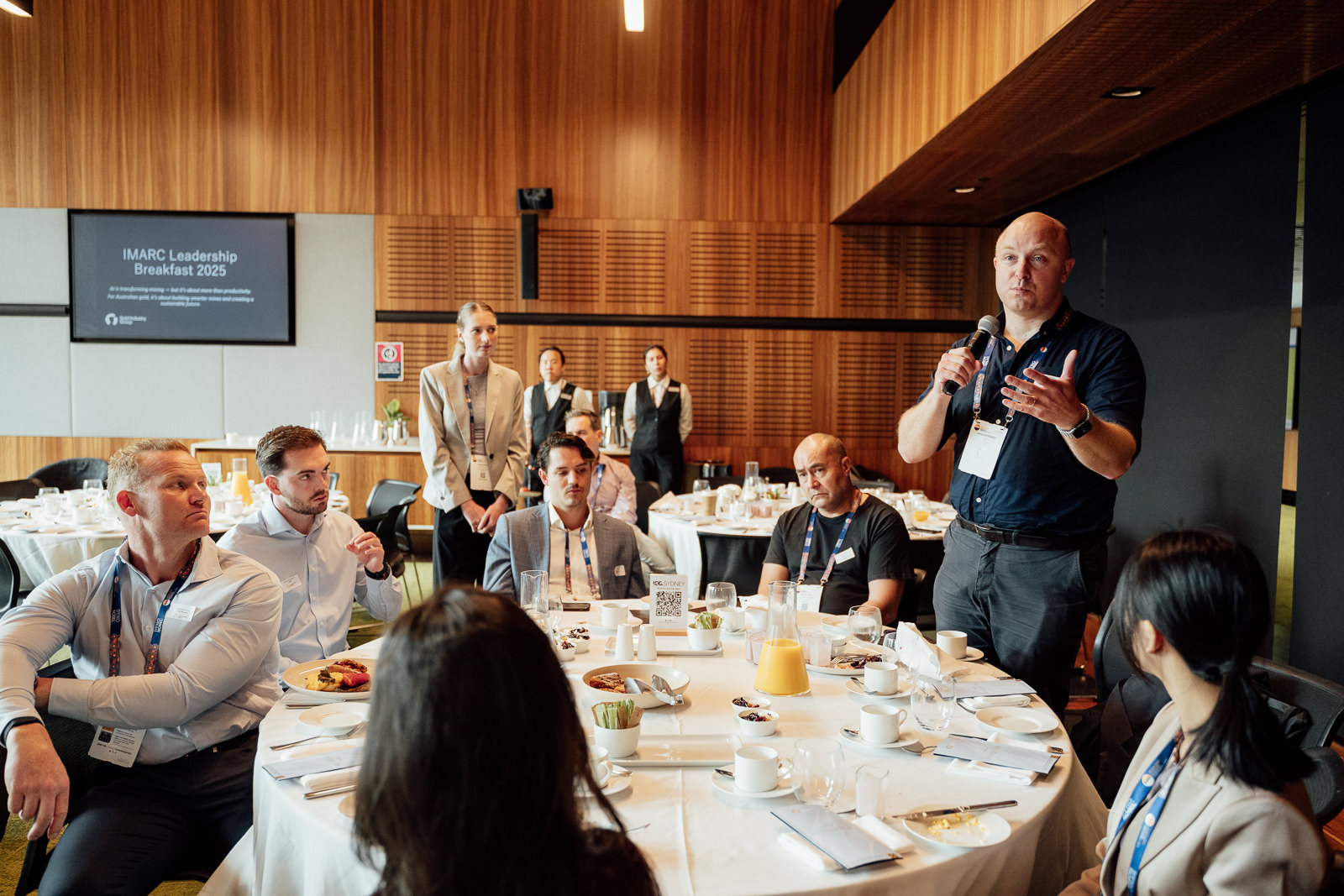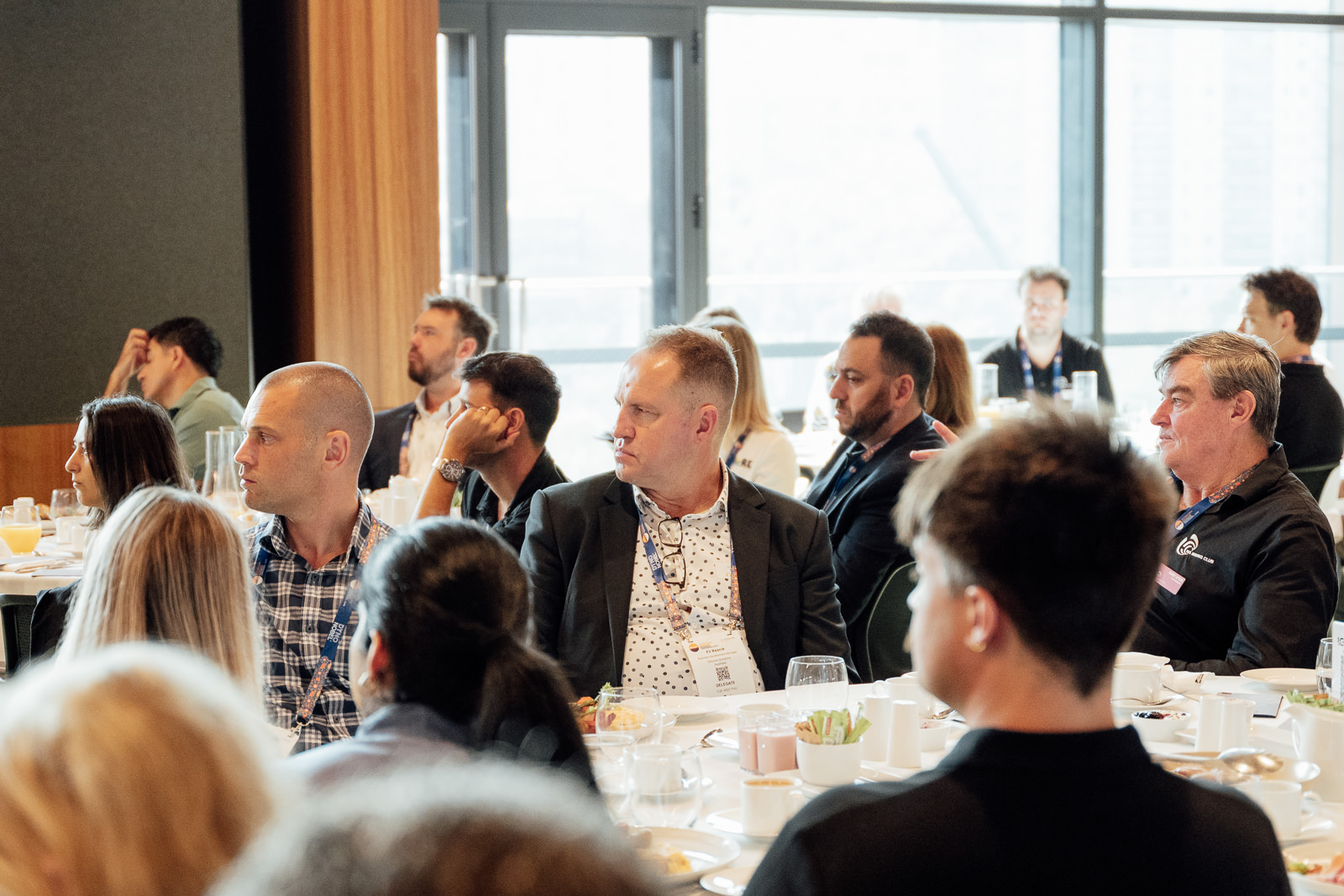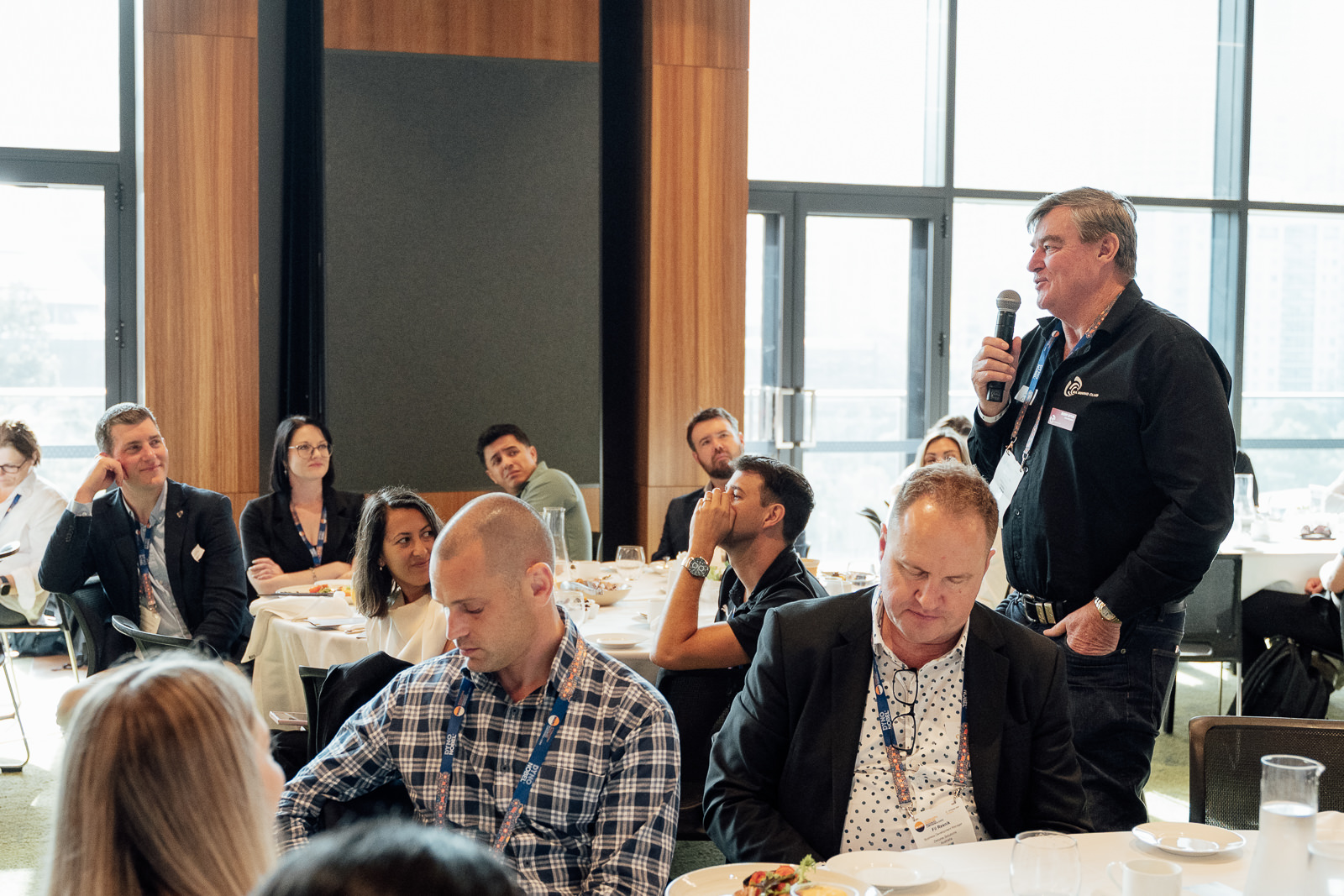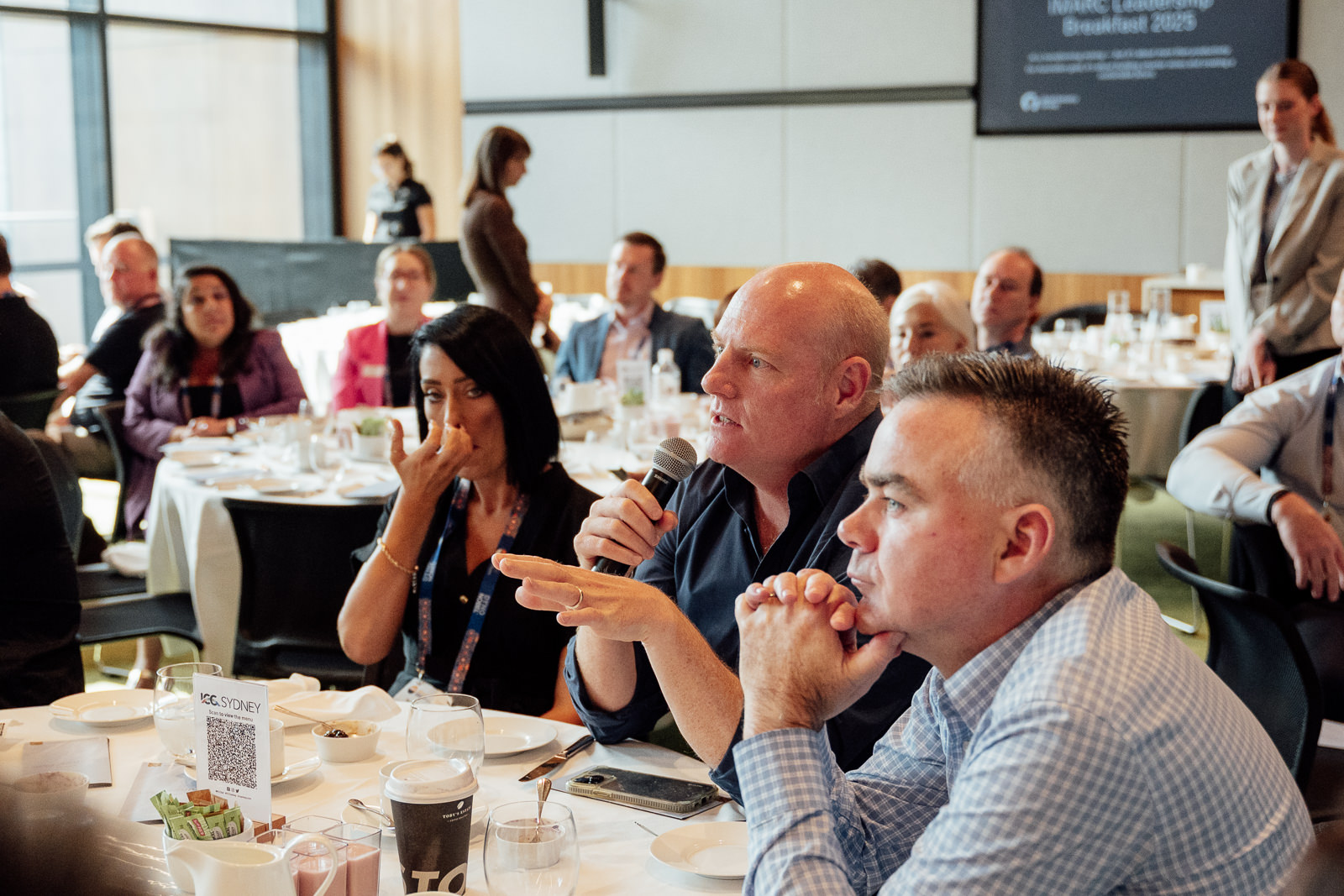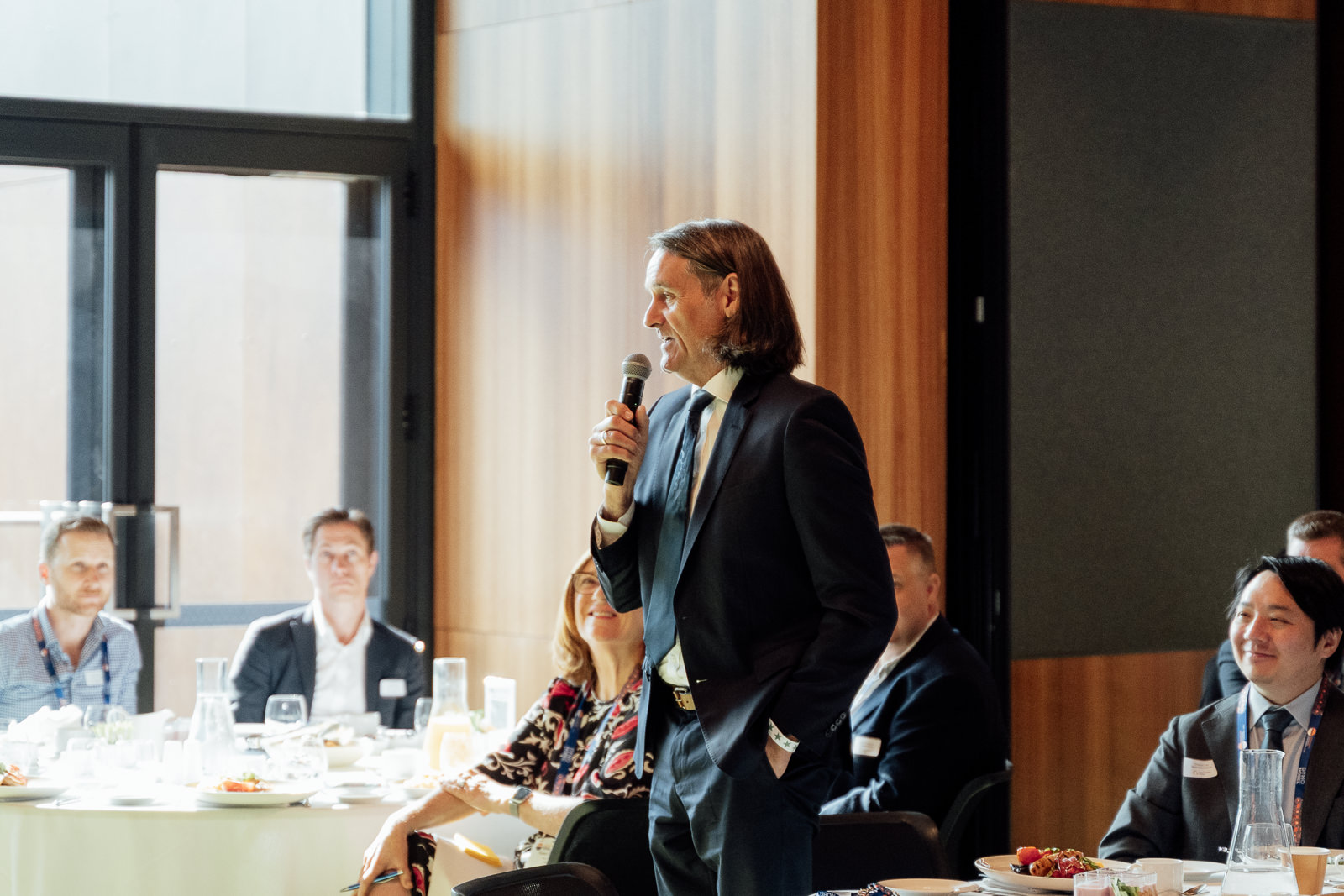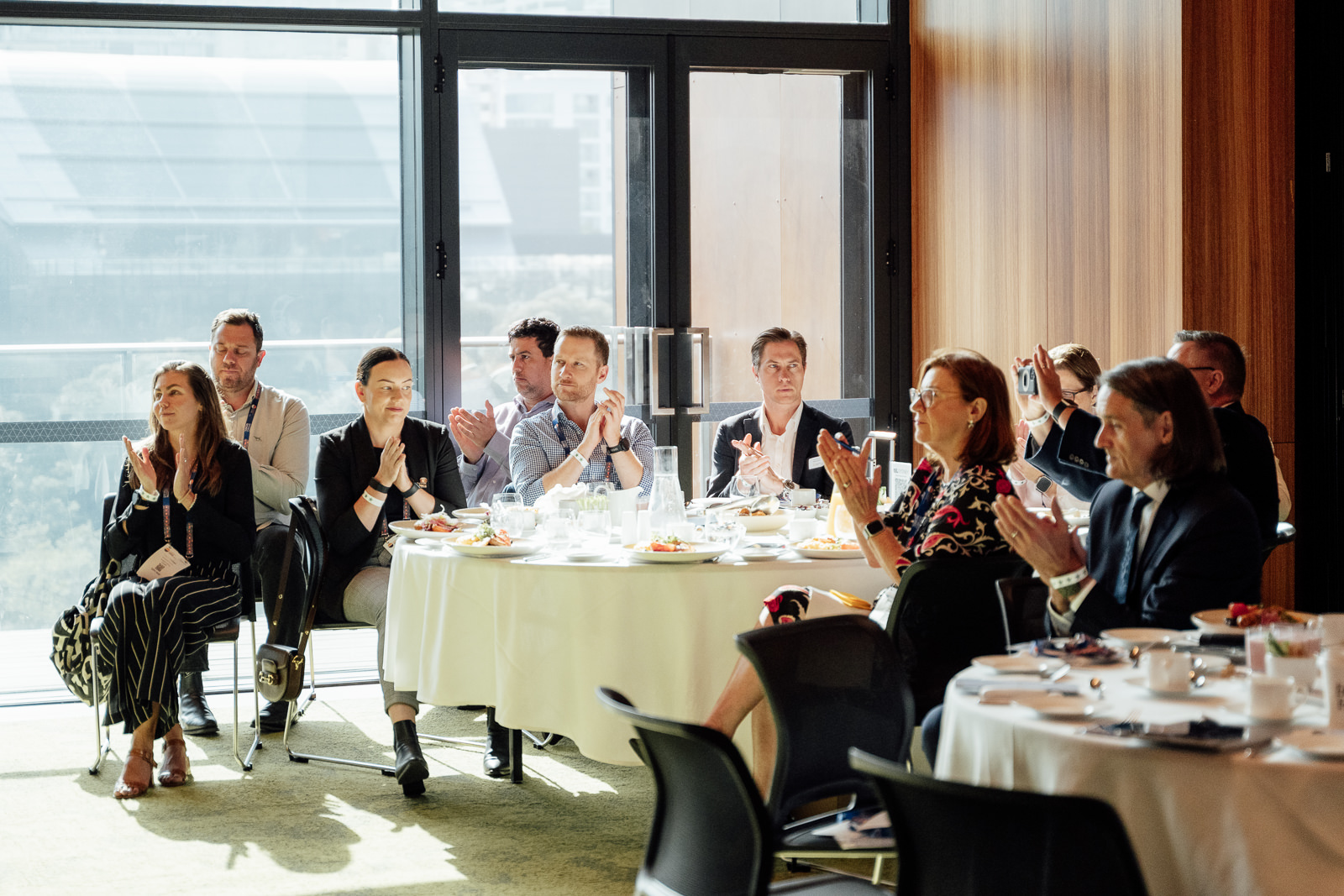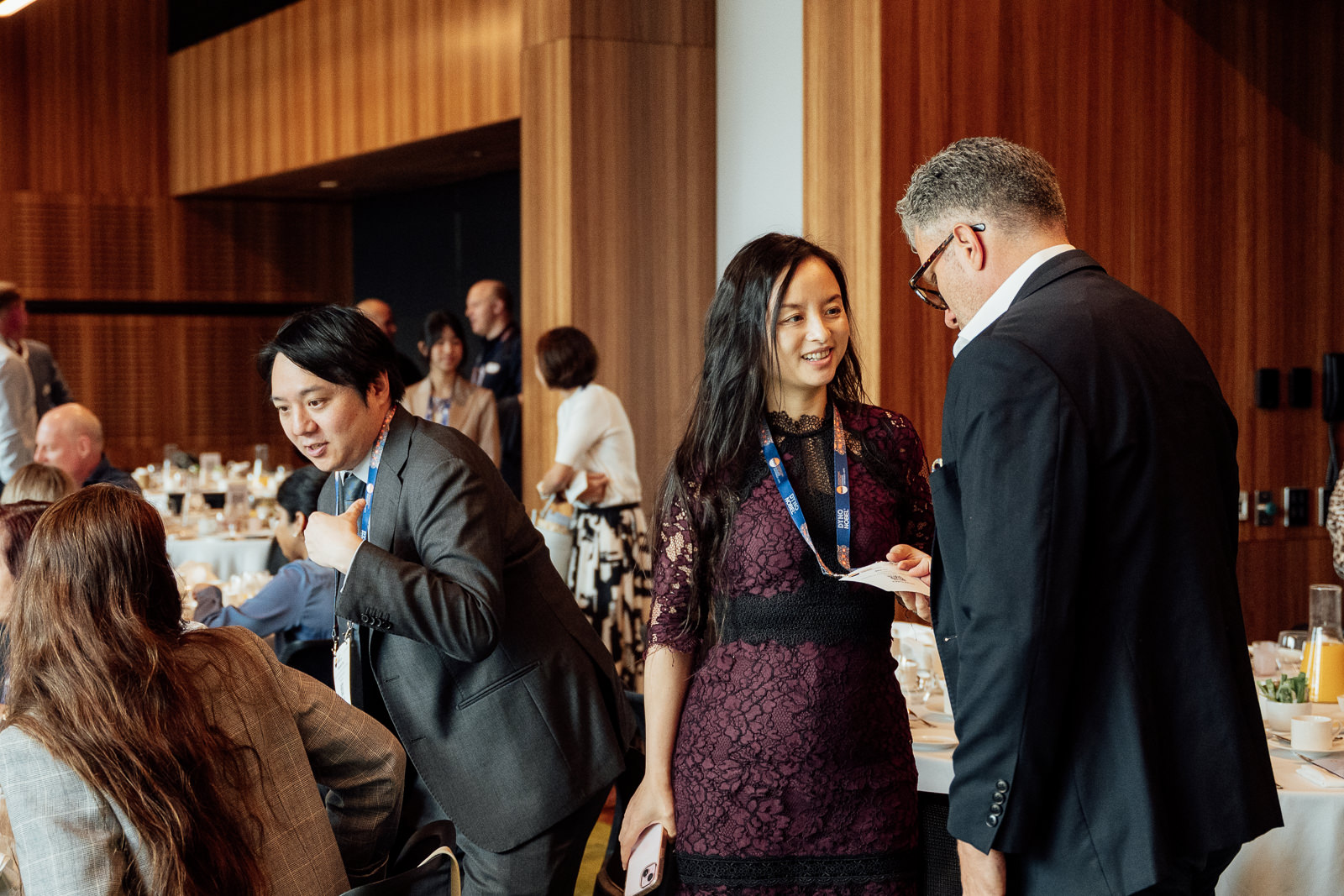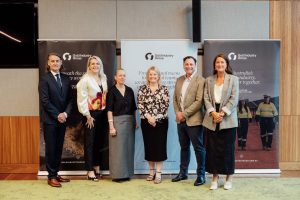What happens when gold meets AI? Inside GIG’s IMARC Leadership Breakfast
The Gold Industry Group’s sold-out Leadership Breakfast at IMARC Sydney brought together industry leaders to explore how AI, innovation, and collaboration are shaping the future of gold. The discussion revealed both the opportunities and challenges of a rapidly changing sector — and the vital role people will continue to play in driving progress.
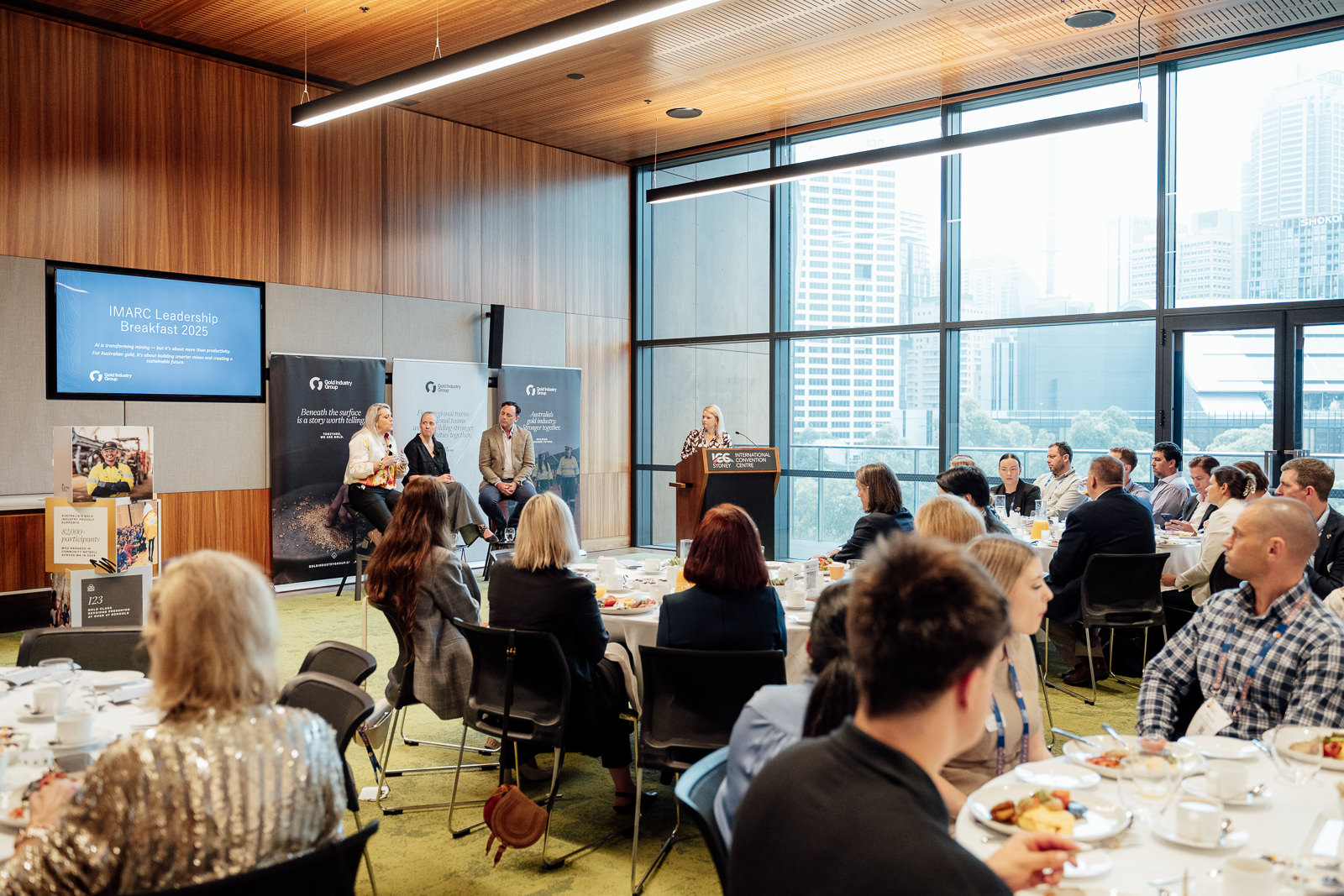
Overview
A sold-out crowd of more than 110 delegates gathered last month at IMARC Sydney for the Gold Industry Group’s Gold Horizons: Trends, Technologies, and Tomorrow’s Opportunities Leadership Breakfast — a lively and thought-provoking discussion that explored how artificial intelligence and innovation are reshaping the future of gold.
The event brought together a powerhouse panel of industry leaders: Fiona Murfitt (Evolution Mining), Rob Derries (Gold Fields), and Louise Fisher (CSIRO Mineral Resources). The conversation was expertly moderated by Kristie Batten, Mining Journalist and Editor, and drew a mix of mining executives, technology specialists, government representatives, and academics.
A future powered by technology — and people
Setting the tone, GIG Chair and Managing Director & CEO of Westgold Resources Wayne Bramwell reminded the audience that the intersection of technology and people will define the sector’s next chapter.
“AI and automation are changing the way we explore, mine and make decisions,” he said. “But technology alone doesn’t drive transformation — people do.”
That balance between innovation and the human element became the through-line of the morning.
For Fiona Murfitt, Vice President Sustainability at Evolution Mining, the key is using technology to remove error and unlock better decisions — without losing sight of ethics and context.
“AI excites me and terrifies me in equal measure,” she admitted. “It’s loaded with bias, because humans are loaded with bias. So while AI can take away error and help us make smarter, cleaner decisions, we’ve got to stay alert to the ethics piece.”
Murfitt said her team is already working with graduates on projects that explore bias in machine learning systems and the implications for future mine planning.
“We haven’t yet fully got our heads around what’s coming — especially with quantum computing on the horizon — but what’s possible is extraordinary.”

Change management, capability and trust
Rob Derries, Senior Manager Technology at Gold Fields, echoed that sentiment, arguing that the biggest barrier to innovation isn’t cost or capability — it’s people.
“The change-management piece is the key,” he said. “For a successful technology implementation, it’s 70 per cent change management and 30 per cent technology. The tech works — it’s the human side that takes effort.”
Derries spoke about Gold Fields’ trials of remote bogging and mine-operating centres, emphasising the need to involve operators early and design processes around their input.
“We workshop with our site teams so they understand what we’re trying to achieve, and we get their skin in the game,” he said. “If people see the benefits and have ownership, the technology sticks.”
That human connection extends beyond the workplace. The panel agreed that maintaining trust with local communities remains essential as operations become more automated.
Murfitt noted that “Australians generally have a positive view of mining, but that’s built on the belief that benefits are shared with regional communities.”
Ensuring technology continues to support those communities, she said, will be critical to sustaining that trust.
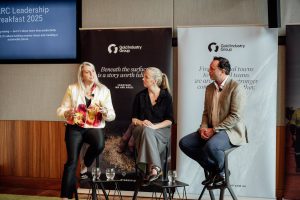
Diversifying skills and embracing experimentation
For Louise Fisher, Director of CSIRO Mineral Resources, the shift to digital mining represents not just new tools, but new mindsets.
“Across every sector we work with, it’s the same story — we’re all on the learning curve,” she said. “Adopting an experimental mindset is going to be critical. Try, learn, benchmark, revisit. That’s how innovation sticks.”
Fisher emphasised the importance of collaboration and skills diversity to address growing STEM shortages.
“We’re seeing a drain on mining engineers and STEM professionals across Australia,” she said. “The opportunity is to diversify who’s involved and bring in boundary-spanning skills — people who can translate between technical disciplines and human systems.”
That point resonated across the panel. Murfitt added that diversifying skills and perspectives not only strengthens capability but also fuels innovation.
“The more perspectives you bring to the table, the more you’ll see different solutions emerge — and that creates energy and optimism,” she said.
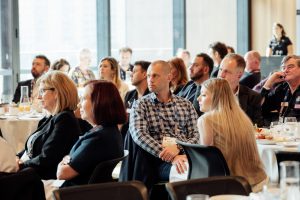
The mine of the future
Asked to look ahead to the gold mine of 2045, the panelists’ responses combined realism with excitement.
“Our mines are getting deeper, hotter, and more complex,” said Derries. “We’ll rely more on technology to stay sustainable and safe — but we’ll still rely on people, because that’s what makes our industry what it is.”
Fisher predicted progress toward “zero-entry mining” — low-footprint operations driven by automation, sensing, and precision mining.
“That trend has already started,” she said. “It’s about embedding new technologies to lift safety and efficiency while creating different kinds of roles.”
Murfitt envisioned a fully integrated, circular mine of the future. “Everything will be cradle-to-grave,” she said. “Reprocessing water, generating energy at the source — whether that’s on-site or back in a central hub. Automation will be key, but so will understanding where our resources come from and how we manage them responsibly.”
The conversation even touched on space and deep-sea mining, with Fisher noting that mining technologies are already influencing — and being influenced by — other frontier industries.
“Remote operations and robotics developed here are now informing work with NASA and the European Space Agency,” she said. “That cross-pollination will only accelerate.”
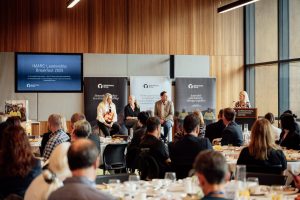
Collaboration at the core
Throughout the session, one theme remained constant: collaboration.
“In gold, we’re not really competitors,” Derries said. “Our competition is how to operate more safely and efficiently. Sharing learnings, collaborating on implementation — that’s where we’ll all move forward faster.”
It was a sentiment echoed by the room and reflected in the post-event energy. Attendees left the ICC feeling positive about the pace of change — and the opportunities that lie ahead if the industry can embrace technology while staying grounded in its people and purpose.
Photo Gallery

